THE BEST ROAD CYCLING SHOES IN 2024

If you are a serious roadie, riding one of the best road cycling shoes is worth the added performance and enjoyment they can give you.
TL;DR (click for more)
- Good road bike shoes are critical to optimize your power, speed, comfort, endurance, and enjoyment of cycling.
- The best cycling shoes are worth the money, can give you both function and fashion, and make you more competitive and comfortable, but they have unique sizing and fit characteristics from one brand to the next.
- Choosing between them requires knowing how efficiently they transfer power, how well their shape or “last” suits your feet at various points from heel to toe, and how effectively their closure system, upper materials, venting, and styling enable your performance and comfort.
- After testing and comparing the performance, comfort, and lasts of the top models from a dozen road bike shoemakers, we found the best are the Specialized S-Works Torch, Shimano RC903, Sidi Wire 2, and Northwave Veloce Extreme.
When enthusiasts seek the best road cycling shoes, several qualities come to mind. Efficient power transfer, comfortable fit, good-looking, and reasonably priced tops my list.
Are they all important? Can you find them all in one pair of road bike shoes?
Yes, and relatively speaking, yes.
Here’s why:
You want efficient power transfer so that the energy you deliver from your legs goes to your pedals with minimal loss through your shoes.
A comfortable fit makes it possible to deliver that power hour after hour without your feet ever complaining.
Shoes that are good-looking to you and perhaps others motivate your performance and enhance your enjoyment on the road.
And a reasonable price, at least compared to what other options we have to get top cycling gear performance, well, we always want that.
In this post, I’ll share my evaluation of the best cycling shoes for serious enthusiasts, those who ride 4 or more days a week throughout the year and challenge themselves to get the best performance, fitness, and enjoyment they can from cycling.
If you’re an enthusiast, regardless of whether you race, do club rides, like to ride short routes, spend long days in the saddle, or get after it every day you ride in a variety of ways, these shoes come the closest to delivering what you need to get the most out of your road cycling.
RECOMMENDATIONS
With the charts below and the straightforward commentary about what we like and don’t like for each shoe we’ve tested, I attempt to give you enough about how they rate against what matters most so you can pick between them.
While I normally recommend a single best performer and best value in each category of gear I review, I can’t do that for road bike shoes for two reasons.
First, because our feet have different shapes, the “last” or dimensioned shape of some great shoes will not fit some feet as well as others might.
Second, you may not like the look of even a great shoe that fits you well.
Third, the best value in road cycling shoes is usually found in single Boa or Velcro closure shoes that don’t perform nearly as well as the dual-dial shoes reviewed here.
Instead, I give you a performance rating for each shoe based on its power transfer efficiency and comfort. Then, I compare the shoes’ last and other design characteristics that you can contrast with what you know about your own feet and how they fit in walking, running, or bike shoes.
That and the links I’ve provided to stores I’ve vetted that carry these road cycling shoes at the best prices should allow you to close in a pair or two to order and decide on.
First, here are my comparative performance ratings:
I suggest you start by looking for the shoes with the best rating in the chart column above you think best fit the width of your feet.
So, if you normally wear a standard-width shoe, start with the shoes in that column of the chart.
I’ve rated the shoes that are in the upper right of each column as the top performers based on multiplying my comfortable fit rating times the power transfer efficiency rating, both on a 1 to 3 scale where 1 is better, 2 is on par, and 3 is worse than the others. Similar to a golf score or a ride time, the smaller the number, the better the performance.
Then, look at the chart below to pick between the top-rated performance shoes in your width that have the last characteristics you want.
Because shoes are sized differently for the same length foot, and my fellow testers and I have remarkably close but not identical size feet, you’ll see shoe sizes from 42.5 to 43.5 in this second chart. However, the last characteristics are based on wearing the right size shoes for each tester.
I have put the prices of these road bike shoes in the reviews that follow. Since their prices are all within 10% or so of each other, it’s best you choose between these shoes based on their stiffness, comfort, and last characteristics.
OK then. Let’s get on with it!
In The Know Cycling is ad-free, subscription-free, and reader-supported. If you want to help keep it rolling without any added cost to you, buy your gear and kit after clicking the store links on the site. When you do, we may earn an affiliate commission that will help me cover the expenses to create and publish our independent, comprehensive, and comparative reviews. Thank you, Steve. Learn more.
Specialized S-Works Torch – Widening for comfort yet as stiff as ever
Performance Rating: 1
Whenever a new model of one of the best bike shoes is introduced, as is the case with the Specialized S-Works Torch, the first question that comes up is how it differs from its predecessors.
With the S-Works 6 and 7 being two of the best-performing shoes over the years, Specialized established a dynasty of sorts with the S-Works road cycling shoe line. While I’m not privy to any sales data, it’s probably a good bet that Specialized has sold a crapton of them to road enthusiasts and racers. I certainly see a lot of them on the road.
For those of us who’ve owned S-Works shoes, like fellow tester Nate and me, who have both the 6 and 7, and may need or, more likely, want a fresh pair of shoes every 15,000 miles or so, we’d like to know if the new S-Works Torch fits and performs the same, better or worse than what we’ve become accustomed to.
And for those who are looking to step into one of the best road bike shoes or perhaps switch from a pair they’ve not been totally satisfied with, the second question is how the Specialized S-Works Torch compares to models from other brands.
I’ll try to cover those two questions in this review about what Nate and I liked and didn’t like about the newest S-Works top-of-the-line shoe.
From what we agree and disagree on, I hope you can find what aligns with your preferences and help you choose between the S-Works Torch and other models of the best road bike shoes we’ve tested.
Like: For the labeled size (we tested a size EU 43.0), the S-Works Torch feels a bit longer than the S-Works 6 and 7. Whereas the 7 had a pointier toe box, a characteristic that might appeal to those with far longer big and second toes than the rest, the Torch is more rounded for those with piggies with more similar lengths.
The length and size are the same between the Torch and 7 and perhaps a half size longer than the 6; just recognize that you may feel more room between the front of your shoes and the 3rd, 4th, and pinkie toes with the Torch than you did with the 7.
While the S-Works Torch’s side-to-side toe box room is one of the most generous of dual Boa shoes, it’s slightly less than what the 7 provided and more than what we experienced with the 6.
You do get far more protection against scuffing the upper at the front of the Torch than the 7. A rubbery, bumper-type piece about the height of your toes wraps that area of the shoe’s outside.
Moving on to the forefoot, the balls of my size D feet didn’t even touch the insides of Torch shoes. It’s clearly wider in this area than the 7 or 6. While Nate and I really liked that Spesh did away with the Velcro strap that was intended to adjust the forefoot shoe width but really didn’t do the job, I’m disappointed that they didn’t extend the lower Boa lace down to the forefoot the way Shimano, Lake, and others do to better adjust the width in this area.
This is where we start to get into personal fit preferences. While my feet are a few millimeters wider and longer than Nate’s, this added forefoot width didn’t even merit a mention in Nate’s testing. I also prefer a racier, more glove-like fit despite riding nowhere near as fast as Nate.
Go figure.
At the mid-foot, the Torch is clearly wider than the 7 and more similar to the 6. The Torch has one of the widest forefoot areas among the dual Boa, performance-level road bike shoes we’ve tested.
Again, Nate liked this after finding the 7 a bit too narrow. Despite my wider foot and probably because I like a snugger fit, I preferred the 7’s forefoot width.
Of course, once at the midfoot and continuing up toward the opening of the shoe, the Boa dials allow you to snug the shoe as much or as little as you like. And here you see big changes between the S-Works Torch and its predecessors, which we think are all for the better.
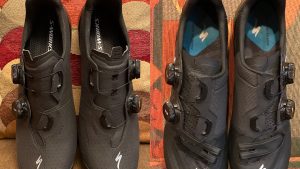
Differences between the S-Works Torch (left) and 7 in the tongue edge, top wire width and guides, upper material, and Velcro strap
While the S-Works proprietary Boa dials are the same as with the 7, the greater distance between the top dial and hook on the Torch gives you a more functional lace. That’s because Specialized removed a lot of material between the left and right side of the upper from the midfoot up toward the foot opening of the Torch.
This allows you to put your feet into and or take them out of these new S-Works shoes more easily by unwinding the dials rather than having to take the laces out of the hooks the way you had to with the 7 and 6. However, it’s still not as easy to get in and out of them as nearly every other top road cycling shoe that uses Li2 or IP1 Boas, which fully release the wire tension by just pulling up the dials.
With this wider opening, the tongue plays a bigger role in the fit and comfort of the Torch. Tightening the dial, especially the top one, feels more like you’re bringing the tongue and upper closer to your foot, similar to how the 6 worked, rather than bringing the sides of the shoe closer together, as we experienced with the 7.
The Torch’s tongue has two wire loops on top of it to keep the wire laces in place. It’s also comfortably padded and, notably different from its immediate predecessor, has softened and shortened the edge that felt quite rigid and high against the front of your foot between your ankles.
And then there’s the upper material itself, also a big improvement from that rugged, plastic-like synthetic Dynema used in the 6 and 7. The S-Works Torch uppers are more supple and comfortable, making them on par with those used by all but the leather ones used in Lake shoes.
Don’t Like: On the hottest days, and we certainly had our share of those when I was testing these, my feet were hot in the Torch (Hmmm? Something in a name?). I’ve not had this issue in other shoes before. Perhaps the new upper material or the small, single vent in the sole between my first two toes was to blame.
The 7 had a slightly larger vent more to the center of the toes and much larger vents under the arch and just below the heel.
On the contrary, Nate found S-Works Torch hot weather ventilation more than ample and noted that he’d have to wear heavier socks for shoulder season riding due to the shoe’s lack of insulation. Doubling down, he welcomed the contribution of Torch’s added room for those heavier socks and its adjustability to still wear lighter ones in the summer months.
We strongly agreed that Specialized could also do better and be more competitive with the Torch by supplying insoles of different arch support heights the way brands like Shimano and others do now with their highest-priced road and MTB shoes. While most of the best road bike shoes are built with flat arches these days, the thin insoles that come with the S-Works shoes are merely cosmetic, and you are forced to spend money on an aftermarket insole like their Body Geometry brand ones.
Yes, you can move those insoles between your road and MTB shoes or into whatever road shoes you buy next. But, it shouldn’t be necessary to make the added investment for shoes that already cost as much as the S-Works Torch.
The heel cup has always been, dare I say, the S-Works’ Achilles heel. The back end of the shoe around the upper heel and below the ankles got wider and taller from the 6 to the 7. With the Torch, those areas get even wider than the 7 but shorter again like the 6.
These changes eliminate the interference and rubbing that came with the design of the 6 and 7 shoes, especially for those whose calluses weren’t established from early-season riding or who hadn’t worn shoes with their narrower heel cups.
Nate and I disagree on whether the Torch’s wider heel area has gone too far in the S-Works shoe evolution. While we agree that the Torch keeps our heels down, I experienced too much side-to-side movement. I felt less control and developed a blister on one of my heels during a long ride.
Nate also acknowledged that the wider Torch heel cup led to lateral motion, but it wasn’t a control or blistering problem for him.
If you do your own cleat installation as Nate does, you may find it a bit frustrating on these Torch shoes. The sockets in the soles of the shoes slide and rotate so freely that you need first to capture them with the cleat screws and then keep outward tension on the sockets as you turn the screws. While they remain in place once everything is bolted down, Nate found it to be a rather fiddly experience getting them both tight and in the right alignment.
Overall, we found the S-Works Torch to be a very comfortable pair of high-performance cycling shoes. The outsole is as stiff, and the power transfer is as good as any previous S-Works or other models we’ve ridden.
At the same time, the Torch is more comfortable in many ways than the S-Works 6 and 7 that came before it. If you like roomier shoes, they are also one of the most comfortable dual Boa shoes.
It’s certainly not perfect. Nate or I took issue with its lack of forefoot width adjustment, ventilation, heel cup width, and proprietary Boa dials.
There’s no doubt that the Specialized S-Works Torch is a top performer. For Nate’s fit and comfort preferences, it’s the shoe for him. I prefer a more tailored fit like the Shimano RC 9’s latest iteration.
Price and Availablity: If the Torch fits your preferences and US$450, £285, €367 MSRP/RRP budget, you can order it by clicking on these links to my recommended stores Competitive Cyclist, Performance Bicycle, Sigma Sports, and BikeInn.
Shimano S-Phyre RC903 – Below the surface changes bring it to the top
Performance Rating: 1
While very similar to their immediate predecessors, the latest Shimano S-Phyre RC903 road cycling shoes have changes below the surface that make them a noticeably better performer and more comfortable than their highly-rated predecessors. I rank the new S-Phyres among the best cycling shoes we’ve tested and the ones I’m most likely to put on for a ride on the road or trainer.
Like: On the surface, it looks like Shimano has made only superficial, small modifications to the shoes. Most obvious is the RC903’s use of multiple tiny eyelets to direct the closure lace in a figure 8 pattern in the area above your toes instead of the regular-sized plastic guides the lace runs through on the previous RC902 model.
There’s also a stretchy, sock-like fabric running atop your toes between these front eyelets; the RC902 used the same upper material in this area as in the rest of the shoes. And if you look closely, you’ll notice a modified pattern of pin-hole-sized perforations across the uppers of the RC903.
Both models’ heels look to be protected with almost the same bumper profile and thickness as before. True, the new RC903 bumpers have slightly raised ribs along the sides of the heels. Indeed, the entire outside surface of the shoes, from the ankles to the heels, has an appealingly shinier and perhaps more reflective finish than before.
However, the design, materials, and vents in the shoe’s bottom or “outsole” appear unchanged. Likewise, the same dual, Li2 dial BOA closure system with the upper dial attached to the end of a crossover strap still controls the fit of the shoes.
The signature blue color that has long made this S-Phyre stand out in a crowd remains along with classic black and white options and my favorite, the In The Know Cycling red. (How did they know to do that?)
Even the single-digit increase in the model number from RC902 to RC903 and the almost identical weight (242 to 244 grams on my scale for a single EU43 shoe) suggests little has changed.
Going below the surface and actually putting my feet into and riding the new Shimano S-Phyre RC903, I immediately noticed two changes that make them as good as any road cycling shoes we’ve tested and better than most for both fast, hard group rides and races and long days of endurance riding.
I previously rated the RC902 model equal to the best road cycling shoes for their overall performance. But while their snug fit and stiff outsole seemed to transfer your leg power to the pedals as efficiently as any shoe we’ve worn, my fellow tester Nate and I found them less comfortable than other shoes on 3+ hour rides.
The Shimano S-Phyre RC903 changes that. They have more room both above and to the sides of your toes than the earlier model while still giving you a glove-like fit with no pressure points from the forefoot back. This makes them as comfortable as any shoes I’ve reviewed on 3+ hour rides.
And while I’ve not yet worn them outside on the warmest summer days, I never found the prior models hot in those temps and expect the softer, permeable fabric above your toes will allow them to breathe even more inside the RC903.
The second consequential below-the-surface change comes at the back of the shoes. On my feet, the RC903 feels more tailored to the shape of my heels from the middle – or just above where the heel’s width begins to decrease – to the top than the prior model. The lower heel cup volume had always been comfortably snug, and that seems unchanged in this latest model.
This heel cup reshaping gives me the sense that the shoes are more connected to my heels than ever during my pedal stroke’s up and forward quadrants. At the same time, I didn’t experience any challenge getting into and out of the RC903 or any change in comfort at the heels while cranking on the pedals.
Even with the added room for your toes, these Shimano S-Phyre shoes aren’t as wide as the new top-of-the-line Specialized S-Works Torch in the toe box, forefoot, or heel cup areas. That’s a plus for me as I found the Spech too roomy for my EU43 or US 9D size feet to get optimized power transfer.
On the other hand (other foot?), my fellow tester Nate who wears the same size and whose feet measure just a couple of millimeters shorter and narrower than mine, prefers the Torch’s fit and can still drop most anyone he rides with.
Shimano also makes the RC903 in a men’s wide that adds 3-4mm to the forefoot and probably is more similar in roominess up front to the Torch without the latter’s wider heel cup.
As with most shoes and cycling apparel in general, we tend to find and stay with the brands that seem to fit us best. I’ve tested a dozen brands and fit well in many of them. But I prefer the last of Shimano’s road and gravel shoes. The same goes for Nate, who wears Shimano MTB shoes but prefers the wider fit of the Specialized Torch road shoes.
If you’re new to high-performance road shoes and know that the proportions of your feet fall somewhere in the middle of the bell curve, the Shimano S-Phyre RC903 is definitely a shoe worth ordering and trying on.
Don’t Like: There’s little that I don’t like about the RC903s. Shimano has been one of the leaders in giving you pads of different thicknesses that you can velcro to the insole for more or less arch support. However, even with the right pad in place, I still find the Specialized Body Geometry insoles give me a smoother transition to and from the arch and along the full length of the insole.
And while I credit Shimano’s design of a crossover strap as part of the upper closure for giving me a precise, pain-point-free fit, I find you do need to be mindful to place it not too far above or below its intended position before cranking the Boa dial to get the most even pressure across your midfoot.
You can also get the RC903 in a women’s version with a unique last shape, but only sold in white. My fellow tester, Aiyana, rode and reviewed the men’s and women’s versions of the shoe to see how they differed.
Price and Availability: The Shimano S-Phyre RC903’s USD $450, £350, €407 price is also no bargain but is no more than other top-tier road cycling shoes. It’s available at these links to Competitive Cyclist, BTD (BikeTiresDirect), Performance Bicycle, and Sigma Sports.
Sidi Wire 2 Carbon – First-rate power transfer, comfort, and status but a trying closure system
Performance Rating: 1
Like: For those who want a choice in a top-of-the-line pair of road cycling shoes, Sidi sells three 2-dial models that share the same last characteristics. The Genius 10 has both dials positioned on the side of the shoes, the Shot 2 has both on the tongue, and the Wire 2 has the upper dial on the side and the lower one on the tongue. The standard Wire 2 reviewed here is sold in men’s and women’s versions, with a matt finish (Wire 2 Matt), with highly perforated uppers (Wire 2 Air), or in a narrow version (Wire 2S). They also come in a wide range of regularly updated color choices and combinations across the different models.
So if you want options in a top-performing shoe, Sidi has them in spades.
The Wire 2 I evaluated is a supremely stiff, breathable shoe with an excellent and highly tunable fit for my standard width US 9 1/2 D, EU size 43 feet. I can also see these fitting those with narrower feet well; the toe box has no extra room.
Once I had the Wire’s dialed in, they seemed at one with my feet. They provided first-rate power transfer efficiency and comfort. Thanks to the screw-adjustable band, the heel hold was flawless – neither too tight nor loose. I noticed no slack or slip between these shoes and my feet through each part of my pedal stroke. The fit was also comfortable over many miles.
Like Campagnolo, Sidi is a classic cycling brand and conveys status along with its great performance and comfortable fit. So there’s a lot to like in these Wires if you are looking for a classic, well-fitting, high-performance road cycling shoe that your fellow enthusiasts will notice.
Don’t Like: Like Campagnolo, Sidi also seems fixed on its way of doing things. Unfortunately, applying that approach to their shoes makes them quite different from a growing range of equally well-performing and less costly shoe options.
The Boa dial closure system has spoiled me. I find Sidi’s proprietary Tecno-3 Push system a bit trying in comparison. With top-of-the-line Boas found on nearly all the other top-of-the-line shoes, you only need to twist clockwise to tighten your shoes, counterclockwise to loosen them, and pull up to fully release the lace tension. It’s mindlessly simple to do while underway.
By comparison, you need to locate the hinged tab on Sidi’s dial, flip it up, turn it to tighten the shoe, and then flip it back down. Alternatively, you can push the red button at the top of the dial, and it flips up. You then find it (easier to do once it’s up), turn it to tighten, and then flip it back down. Not hard. You can get used to it, but it’s extra steps.
Loosening your Sidi while underway requires only that you push one of the two buttons on the edge of the dial. Each push backs it off a click. Unlike the Boa, you can’t totally free the slack to get your feet into or out of your shoes before or after a ride. Instead, you need to push and hold both edge buttons with one hand while pulling open the shoe with the other.
Sidi also hasn’t joined the wider toe box movement that others in this review seem to be part of. While I’m comfortable in Sidi’s standard toe box width, I find the wider toe box even more comfortable without having to give up fit or performance.
Sidi’s last is also a touch narrower to start with. If you are a full D width, it’s gonna be snug. Comfortable if you like snug, which I do, but snug nonetheless.
Also, while most of the shoes in this review are so close in weight that they’re virtually indistinguishable, the Wire feels and is heavier than most by at least 50 grams per shoe. That starts to get noticeable.
The US$500 MSRP price tag Sidi for these shoes is even more noticeable, typically a US$50 to $100 price premium over the others. However, USD, GBP, and EU prices deviate from the MSRP/RRP with Sidi shoes more than others. So, if you look for them at trusted stores like those I list below, you can often find them at discounted prices. If you have a high arch, you may find you need to spend more for a more substantial insole than those provided with these shoes.
Price and Availability: USD$500, £390, €450 at these links to Amazon, Sigma Sports, and BikeInn.
Northwave Veloce Extreme – Stiff and comfortable, but ventilation and dials a notch below the best
Performance Rating: 1
Like: With a name like Veloce Extreme, Northwave is branding this shoe as the fastest in its road shoe lineup. It is certainly their flagship and highest-priced road cycling shoe model.
Toward that goal, its carbon outsole is not only very stiff but, unlike most top-of-the-line models from others, runs the full width and length of the shoes and continues up the inside arch and heel areas. I can’t imagine even the strongest sprinters flexing these soles at any point in their pedal stroke.
Yet I find the Veloce Extreme’s comfort one of its most appealing characteristics.
The wire laces close the upper with even tension across an underlap tongue fixed on the guide side and open on the dial side. The lower dial, lace, and guides that cross the forefoot also snug the vented tongue above the toes as if it had its own dedicated closure.
The tongue itself is sufficiently but not overly padded in the right areas. There’s ample room for your toes to move around, but not so much that they don’t feel part of the effort your feet put into powering your drivetrain.
The durable yet comfortable leather-like upper in white is very attractive, with the black “NW” logo on the front and dial sides of each shoe. They also appear very well constructed and sewn and have hard rubber replaceable toe and heel pads, though, from my time with them, it didn’t seem likely they would ever need to be replaced.
Don’t Like: While everyone’s heels are sized and shaped differently, the Veloce Extreme’s heel cup has more volume and is less tapered than most shoes I’ve tested. My heels don’t move much, but they also don’t feel as bolted down or wrapped as I like.
Neither of the two insole options Northwave includes with these shoes provides more than an average amount of arch support and is not enough for my feet. Unfortunately, using the popular Specialized Body Geometry aftermarket insoles like the blue ++ ones I do blocks the vents cut into outsoles under the Veloce Extreme arches. The few pinholes in the shoes’ relatively thick uppers give me minimal ventilation, even with a fan blasting on indoor trainer rides.
While I liked the even tension of the shoes’ laces, the X-Dial closure system used on these Northwaves isn’t as intuitive, functional, or slim as the BOA ones found on most top-tier shoes these days.
You do get a good tactile feel from the ridges on the half-dozen raised ramps on the edges of each dial. Turning them clockwise to tighten the laces gives you a reassuring, easy-to-feel and hear click. Each turn micro-adjusts a seemingly similar increment to what I feel on shoes with the top-tier BOA Li2 model.
To loosen a lace, you use your finger or thumb to push down on a lever positioned at the top of the platform the dial sits on that also stores the extra lace. One push gives you one notch of lace de-tensioning.
When you want to release the tension totally, you pull back on the lever while simultaneously spinning the dial backward 2-3 turns to give you enough slack to pull your foot out. Alternatively, you can pull back and hold the lower dial with your forefinger and the upper one with your thumb as you slide your foot out.
This video shows you all of that.
It’s easy to do but less efficient than just pulling up on the dial to totally release the lace tension as you do with the BOA Li2. Pulling back on the lever also feels a bit like pricking your finger at first, of course, with no blood to spoil your pretty uppers.
This Northwave dial system is better in my experience than the Sidi proprietary ones and something I quickly adapted to. But like the Sidi, it’s likely the added components in the Northwave dial system, along with the more expansive outsole and thicker upper, make the Veloce Extreme at least 50 grams per shoe heavier than all but the similarly priced Sidi Wire 2.
Price and Availability: $300, €300 from BikeInn.
Lake CX332 – Customizable and comfortable but flexible leather upper makes for less efficient power transfer
Performance Rating: 2
Like: These are luxury and performance shoes all in one. The real leather upper provides dress shoe comfort and is quite handsome, feeling like an extremely well-fit road cycling shoe. The black model looks like you could wear it into an office building after getting off your bike. The white would fit right in at the finest Italian cafe in summer.
They also come in what Lake calls Chameleon Green and Chameleon Blue, which, based on the name, Lake may feel will blend in anywhere.
At the same time, the bottom sole is as performance-stiff as any of the best road bike shoes you could race in. The heel cup is thermoformable and allows you to mold it to your heel’s unique shape. I ran through the molding process several times to get it just where I wanted it.
Two IP1 Boas with dials and guides in just the right places allowed me to snug up the shoes for a good upper wrap.
They also come in standard and wide models and with a 4-hole option for Speedplay pedals in addition to standard 3-hole ones (for which you can add a Speedplay adapter as with and 3-hole sole).
Don’t Like: Just like any pair of real leather dress shoes, you need to wear these real leather cycling shoes a couple of dozen rides for the uppers to shape to my feet. It’s worth it unless you are impatient. (I do need to learn how to be more patient!)
The CX332 uses Lake’s Race last. Its toe box and heel cup run on the narrow side, and the foot volume is limited. I’m fine with that, but most models, including the new S-Works Torch, have gone to wider toe boxes without losing the performance fit. The CX332 also comes in a wide version with a Speedplay hole pattern.
Lake makes other models with different lasts. The Competition last in the CX238 has more toe box room with the same tight heel, while the Sport and Comfort lasts have progressively more room but are better suited for less performance and more comfort.
You do pay a slight performance penalty for the leather upper on the CX332. They feel more flexible than the synthetic leather almost every other top shoe uses these days, so they give a little bit more on the upstroke.
Price and Availability: USD$225, £200, €260 at this link to Competitive Cyclist and Sigma Sports.
Giro Imperial – More room and comfort for more cyclists
Performance Rating: 2
Like: Fellow tester and regular racer Miles, whose feet work well with the historically narrower, flatter last characteristics of Giro shoes, feels the Imperial is one of the best fitting and most comfortable Giro or any shoes he’s ever worn.
Chief among his affection for the Imperial is the heel cup. It bumps out at the base of the heel where it matters most and then tapers up to the top. This creates a great mold for his self-described “average foot” shape and securely holds his heels in place.
The Imperial’s forefoot and toe box widths are both wider and more comfortable than earlier top-of-the-line Giros and on par with the average widths of shoes from other brands. This could open the Imperial to consideration by cyclists who couldn’t previously wear Giros.
The balls of Miles’ feet feel secure – not too tight or loose – in the Imperial. His toes can wiggle and swell without issue. This compares favorably with the scrunched feeling of earlier Giro shoes he’s worn. Imperial’s style also rates highly in his book. The screen-like mesh and faux leather upper that give these Giros a distinctive look are also quite functional. They are supremely ventilated on warm days (though need toe covers below 55F/13C and shoe covers below 45F/7C) and have been quite durable over many miles.
These are his go-to shoes ror a century or all-day ride in the heat or in the mountains.
Don’t Like: While Miles finds the Giro Imperial’s outsoles to be stiff, it’s not as stiff as others he wears. The difference shows up when he’s sprinting in a race.
Something that’s not changed with the Imperial is the relatively flat arch that has been characteristic of most Giro shoes. The highest of the three inserts Giro provides with the insoles provides enough support for Miles’ average height arches. Miles advises that an aftermarket insole will be needed if you have naturally high arches, as fellow testers Nate and I do.
Additionally, the uppers in the Imperial have a bit more room than Miles’ other shoes. He has to crank down the IP1 Boa closure dials more than normal, and the tongue of the shoe gets scrunched as it overlaps itself. Taking care to keep the tongue tucked under the uppers is the solution, though one that could be more easily dealt with by making the tongue a few millimeters narrower.
These three near misses put the Imperial a notch below the best in their ability to efficiently transfer your power.
Price and Availability: US$425, £399, €333 at these links to Competitive Cyclist, BTD (BikeTiresDirect), Performance Bicycle, Amazon, Sigma Sports, and BikeInn.
Rapha Pro Team – Performance in traditional fitting, stylish-looking shoes
Performance Rating: 2
Like: Consistent with how I think about Rapha clothing, their Pro Team road cycling shoes combine traditional design elements and modern styling that works to set them apart from the rest.
While many have gone to some form of a midfoot upper overlay or burrito-style wrap, Rapha sticks with a padded tongue covering a relatively wide opening. I find this allows easy entry and exit from the shoes and quite a bit of comfort over my intermediate cuneiform bone, the one in the middle of the top of each foot that seems to protrude above the rest of them.
The IP1 Boa closure system used in the Pro Team is also no-nonsense. It’s a top-shelf model for sure, but it doesn’t require a ton of turning to reel in the wire and get your feet snuggled into your shoes.
I use the word snuggled purposely because that’s how your forefoot and toes will feel in these shoes. This is a more traditional, race-like fit that I prefer, and contrary to the more spacious toe-box and ample, touchless forefoot width that some shoes have adopted and cyclists may prefer for endurance riding.
The Pro Team also has a very stiff outsole with a high arch profile. It’s one of the few shoes where I don’t need to use an aftermarket insole to replace the ones that come with the shoes, including those that offer arch support pads with varying thicknesses.
On top of all of that, literally and figuratively, is an upper that looks like a stylish knit (it is actually a woven polyester) yet is as stiff as any I’ve worn. That stiffness helps me transfer power when I’m pulling up on the cranks or at least keeps my feet from moving up and down in the shoes.
The heel cup also has a shape that holds my heels nicely in place. I’ll admit to being a fan of white shoes, and the white-looking, light grey color Rapha Pro Team shoes clearly spice up my other kit choices on any given day.
These shoes also come in unique teal and high-vis pink colors, each in alternating darker and lighter shades to give a zebra-type look. For the traditionalist, there is also a black color option.
Don’t Like: While I find these shoes sufficiently comfortable on 3 and 4-hour rides, the snug fit and stiff uppers make them less comfortable than shoes with a more relaxed fit. On my longest rides, I tend to leave these at home.
The pair I wore also felt a half-size or so shorter than the size I was directed to by their size chart after measuring my foot length. This, together with the trimmer forefoot and toe box space, gives you a shoe with relatively less volume than others I’ve tested.
None of this is an issue if you’re looking to optimize performance. For those looking to ride hard sometimes, do longer, less demanding rides at other times, and not stand out based on the style of shoes you’re wearing, there are better options to pick from.
Price and Availability: USD$380, £295, €?315 at these links to Rapha US, Rapha UK, Sigma Sports, and BikeInn.
Bont Vaypor 2023 – While still stiff, a new Bont design with more comfort
Performance Rating: 2
Like: The Bont Vaypor 2023 departs in some important ways from the Vaypor S shoes and other Bont road shoe models like the Riot and Helix that make the brand’s shoes so different than other road cycling shoes. From our testing, my fellow reviewer Adam and I find most of the changes to be improvements for road cycling enthusiasts.
Unlike the Vaypor S, whose carbon outsole extends above the bottom of your foot to completely cover the sides of your forefoot, midfoot, toes, and heels, the Vaypor 2023 outsole has a far lower profile between the toes and heels.
More crudely, while the Vaypor S sole shape has long been described as resembling a bathtub, the Vaypor 2023 has one more similar to a shower base with the front and rear ends of a tub.
The Vaypor 2023 outsole extends about 10mm up the side of your forefoot and progressively increases to about 20mm at the arch area. This is still about 5 to 10mm taller than the height of most top-tier cycling shoes. The uppers are sewn over these extended areas.
But your heel and toe areas are still fully covered and protected by the Vaypor 2023 carbon outsoles.
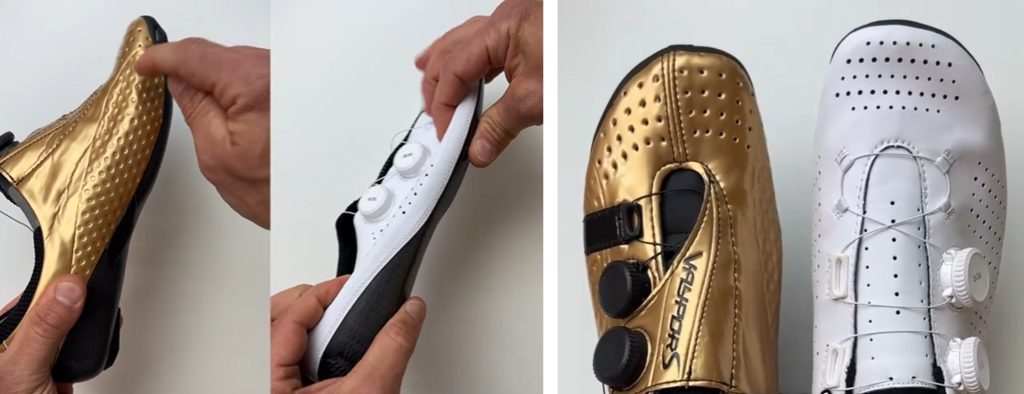
Outsole and upper differences between the Vaypor S (left) and Vaypor 2023 are clear. (Source: Bont Cycling)
A soft, leather-like, attractive upper with a traditional center tongue wraps your feet above the sole. Its many pinholes are larger than in most shoes and keep our feet well-ventilated despite the absence of vent slots in the outsoles. There’s also cushioning foam on the inside of the shoes, adding comfort between your arches and ankles and into the upper portion of the heel cup.
The cup itself is nicely tapered in a way that keeps our heels in place. You can still heat mold the heel cups, though neither Adam nor I felt the need to do so.
For the Vaypor 2023, Bont also does away with the Vaypor S’ stiff upper and burrito wrap top flap where a BOA dial reels in the lace that reaches to a guide below your ankle.
With all of these deviations from traditional Bont road shoe designs, you might wonder whether the company has gone soft with the Vaypor 2023.
Not from our testing. Adam, who at 6′ 4″/193cm and 250lbs/115kg calls himself a “larger guy,” didn’t feel the Vaypor 2023 flex at all when he stood up, not something he can say about other carbon sole cycling shoes he’s worn. While hard to scientifically measure, he also felt like he was putting out more power when riding with the Vaypor 2023.
Instead, these changes drop a fair bit of weight and make the Vaypor 2023 one of the lightest shoes we’ve tested by anywhere from 10 grams/pair, an immaterial difference, to 200 grams/pair, a difference you’ll notice at least when walking in them.
Don’t Like:
The new Bont Vaypor 2023 is not without its quirks and disappointments.
Foremost among them, this model has a nearly squared-off toe area that contrasts both functionally and visually with the rounded shape of most cycling shoes. While this should give you extra toe box room for your pinkies, Adam’s and my toes both felt snugger than we would have liked.
Both of us followed the new sizing method specifically developed for this model. After trying them, however, the recommended sizes are probably a half (Adam) to full (me) size smaller than allows for ample toe box room.
Compared to top shoes from other brands, many of which have increased their toe box and overall shoe volume, the Vaypor 2023 has less of both in the recommended sizes we wore.
Bont uses the BOA Li2 closure system on this Vaypor model, similar to what you find on the best cycling shoes. We like where the dials are placed and how they avoid any hot spots.
But the opening for the tongue looks and feels too wide for my foot, especially across the midfoot. It adds to the sense that these shoes don’t have sufficient volume and make my feet look fat.
While Bont makes a better effort than most brands by including medium and high arch insoles with embedded carbon elements and a raised metatarsal button, neither of us found they offered enough arch and forefoot support or as much comfort as our aftermarket ones.
Price and Availability: US$400, £384 €400 from BikeInn.
DMT SH10 Road Shoes – Warm weather, knit, narrow fit
Performance Rating: 4
Like: I’ve always thought about knit cycling shoes as an extra pair that you’d wear primarily on hot summer days. Going no further than checking them out in the store, they seemed like a light, great-looking, nice-to-have luxury for those who enjoy and can afford such things.
I was initially attracted to DMT’s top-of-the-line KRO shoes. The white ones, of course. When I tried them on, they felt like I was wearing thin, super-attractive, and super-expensive socks, the kind one might wear in soft leather loafers to a cocktail party at a nice ocean-side resort if I was one who did such things.
So, not me.
But, with the introduction of the DMT SH10, I saw possibilities. First, it has structurally supported heel counters or heel cups. The KRO lacks this, and wearing it even in the store, my heel moved freely and seemed unprotected.
Second, the SH10 is just as gorgeous as the KRO, but looks like it would cool my feet more evenly than the KRO. The SH10 has a uniform, 3D-printed look knit upper, essentially giving it perforations across the entire knit upper and under the toes.
This suggests to me an even better airflow than the KRO that has cooling perforations in the upper, and a mesh screen in the outsole across its toes, and another large mesh screen under the arch.
And third, the SH10 is priced competitively with dual Boa, top-of-the-line road cycling shoes from other brands. The KRO is even more expensive.
So, I bit.
Actually, I had to wait in anticipation since the DMT SH10 was first introduced in Europe and wasn’t available in the US, where I ride until early 2023.
When they did arrive, it was winter, and my hot indoor trainer rides with a hard-blowing fan were the closest I could come to a summer simulation. I completed testing the SH10 in the spring on some surprisingly warm April days, a few cooler ones, and even a day with pop-up rain showers.
Don’t Like: After I transition to the upstroke and as I’m kicking forward between the upstroke and downstroke, I feel like I’m giving up some efficiency as my heel isn’t held in place very well. While, as mentioned, the SH10 does have a structured heel counter, it has more volume and isn’t as rigid or formed in the heel cup area compared to other dual-Boa, comparatively priced shoes we’ve tested.
At the same time, the DMT SH10’s forefoot is as narrow as any we’ve tested. While the knit upper provides some give, I still felt a bit of pressure from the shoes at the outsides of the balls of my feet. And I wear a rather standard width, size EU43 shoe in most brands.
The length feels right, and there is sufficient, if not ample, room in the toe box. And like many cycling shoes, these DMTs start with a very flat arch, so you’ll want to add some aftermarket insoles if your feet need more support there.
While the comparative last characteristics chart above shows the details, the DMT SH10 fit is closest to other Italian brands like the Giro and Sidi.
The bottoms of my feet became less comfortable the longer my ride. After a couple of hours in these shoes and despite tightening the Boa dials appropriately, it feels like my feet are moving around too much.
On days cooler than about 55F/13C with any kind of wind blowing, my feet were a bit chilly. They did dry out and clean up quite easily when I got caught in a shower.
One nit to pick. DMT outsoles come with a 4th hole between the three holes you get for standard cleats on most shoes. This can be used with some Look cleats to help you replace them without their positioning.
If you don’t use Look cleats, or if you do but don’t want to take advantage of this feature, you’ll want to remove the small, hard-to-access bolt in the outsole that the screw goes into. If not, you’lll hear it jiggling while you ride as I did until I took it to my shop, and we went on an internet treasure hunt to figure it out.
Clearly, the DMT SH10 is not a 3-season race shoe in most climates.
However, if you ride in parts of the world where it’s warm much of the year, have narrow feet, don’t go on day-long rides, and aren’t pushing to get every last watt of efficiency out of your shoes, these give you a cool and good looking option.
Price and Availability: You can order the DMT SH10 for US$250, £200, €260 from Amazon, Sigma Sports, and BikeInn.
Fizik Vento Stabilita – A generation or so away from realizing its promise
Performance Rating: 4
Like: With the Vento Stabilita, Fizik brings a novel and promising approach to the design of modern road bike shoes. Instead of providing insoles with pads to raise your arch, its upper Li2 Boa closure hooks to an inch-wide strap that connects to two of the same width that extends down the side of your arch to the bottom of your foot. The inner half of the outsole is cut away to accommodate this setup.
Nate and I wore these shoes, but neither of us could feel that tightening the dial changed the arch that already seemed to offer more support from the shape of the very stiff carbon outsole.
Nate found that cranking the dial to get more arch support created uncomfortable pressure against the top of his feet that he was eager to release at rest stops. I felt the added pressure of the strap against the side of my foot at about the eight o’clock position in the arch area. More practically, I had to make sure to position the top single strap in the right place to get the best leverage on the lower straps.
The upper polyurethane material is stiff, offering sufficient resistance when pulling up on the cranks. The forefoot is comfortably snug, and the toe box has plenty of room, more than the traditional race shoe but not as much as the widest available in some shoes.
We both liked the beefy non-slip pads at the heel and the gummy silicone beads along the upper half of the nicely padded heel cup.
Don’t Like: The heel cup is wider than those in most of the shoes Nate and I have worn. That allowed my heels to move more than I like and made the Vento Stabilita feel less efficient in transferring my power.
While the upper is stiff and well-ventilated with pinholes throughout, it has a cardboard-like feel. The tongue area, sewn into the outside of the upper rather than free-standing, has an extra layer of material and seems twice as stiff as the upper. Again, that’s good for power transfer but is not the most comfortable of approaches.
Overall, the Vento Stabilita seems like it’s a design iteration or two away from accomplishing what it set out to do. Smoothing out the pressure along its arch support straps, shaping the heel cup a bit, and using a more comfortable yet still stiff upper material could get it closer to some of its rivals.
Price and Availability: US$280, £150, €255 at these links to Competitive Cyclist, Merlin, Amazon, and BikeInn.
Louis Garneau Course Air Lite XZ – Features take away from performance
Performance Rating: 4
Like: Garneau gets a few things right with the XZ road cycling shoes, the latest generation in the Course Air Lite mode evolution.
True to its name, the shoes stay very cool in warm weather. The pair Nate and I tested have two vented slots in the outsole, one that’s aligned with the area underneath my 2nd and 4th toes and another under my arch. The Course Air Lite XZ also has a cushiony, open-cell foam insole that allows the air to flow through. For cooler days, there is a second closed-cell foam insole.
Garneau also includes different height arch supports that connect with these insoles. We found the highest one works well to effectively give both of us with relatively high arches the support we need.
The upper on the Course Air Lite XZ is probably synthetic but feels like soft, very pliable glove leather. On either side of your forefoot, there are stretchy sections of the upper to allow for wider feet or for those with bunions. It’s quite a clever feature.
Along with the well-placed Li2 Boa dials and hooks, this creates a comfortable upper with nary a hot spot to be experienced even on the longest, hottest rides we wore them on.
Don’t Like: For all the features we like, there are a few we don’t and some core issues that are a turn-off about the shoes.
For example, while the venting is great, the second toe on my right foot (but not my left) sits in the slot designed to let the air in. Not only did that block some of the cooling, but it also felt quite distracting. Neither of the insoles prevented this sensation, nor did my DIY solution, plugging the vent.
This highlighted how challenging it may be to get the vent and toe alignment right since it’s likely that I’m not the only one whose toes don’t line up the same on both feet.
While being quite comfortable, the upper’s soft material doesn’t give you enough resistance when pulling up during your pedal stroke to make me feel like you’re pedaling efficiently. And, using the size chart based on my foot length had me in a shoe that made my feet feel like they were swimming.
I went down a full size, consistent with what I normally wear, but I still didn’t feel the resistance of a more efficient shoe. Nate’s feet are a couple of millimeters shorter and narrower than mine. He also regularly wears the S-Works 7 shoes that provide more toe box room than most. In these Garneaus, his toes are a bit cramped, especially on the tops, and the forefoot isn’t as wide as he prefers.
The Course Air Lite XZ’s Boa retention system also uses laces too long for my liking. It took many more turns to crank them into place, and I needed to pull the edges of the upper that overlay the tongue apart to unreel the wires enough to get my feet out.
The top-of-the-range price for these shoes’ less-than-top-rated efficiency and comfort seems hard to justify.
Price and Availability: US$400 at this link to Competitive Cyclist and Amazon.
THE ROLE OF SHOES IN ROAD CYCLING
I used to pick road cycling shoes based on their comfort and price. It always looked to me like the major difference between what I and other riders wore was style, color, and various features that I didn’t need. I focused on comfortable and low-priced ridin’ rather than feature-rich and expensive stylin’.
I couldn’t have been more wrong.
While I’m still not into stylin’, I learned that a comfortable pair of road bike shoes doesn’t always provide the best power transfer. And while you’d think that comfort comes from a good fit, there’s a range of views on what a “comfortable fit” means, from fit like a glove to a fit like a pair of slippers.
Even the right fit walking around in the store doesn’t always or even usually mean it’s the right fit or a comfortable fit for someone pedaling tempo or threshold zone power out on the road.
As to fashion, I think it’s the last thing that should matter when it comes to picking the best cycling shoes. But I get that looking good, if not necessarily being fashionable, matters to a lot of people.
Perhaps more important than looking good is being seen. Our feet and legs are the only parts of our body that always move when we are riding. If your shoes are a bright color, you have a better chance of catching the attention of a car driver than if you are wearing black ones.
Fortunately, most of the best bike shoes come in at least one or two colors.

You’ll catch a motorist’s attention by wearing bright, distinctively colored shoes that are always moving.
Have you ever thought about getting another pair of shoes other than when your feet start to hurt, your shoes get stretched out, the uppers start looking a little shabby, or something new catches your eye? Have you ever really looked into how your choice of road cycling shoes affects your ability to ride faster or longer?
Before I started testing all sorts of road bike shoes, I must admit that I would have answered no to both questions as a fellow road cycling enthusiast.
Some of us, including me, look at every opportunity to find a few extra watts or clicks of speed by picking the right wheels, tires, or helmets and by spending more time in the right aero position, shaving our legs, shedding our gloves, etc. I’ve written posts about this, one about how training and technique, and another about gear and kit can help you ride faster.
While putting covers over any pair of shoes can make you more aero and save you watts, the right shoes can also help you increase the power you deliver to your pedals and the speed that shows up on your bike computer.
Some of us focus equally or more on endurance than we do on speed and want to ride more miles or kilometers, do more centuries, sportives, fondos, etc., to get or stay healthy. More efficient power transfer from comfortably fitting road bike shoes can help you do the same distance with less effort or get more distance with the same effort when compared to wearing a less efficient pair.
Frankly, I should have known better than to overlook the performance benefits you get from the best cycling shoes and relegate the decision-making merely to apparent comfort and price. I grew up skiing down mountains, raced through college, and have coached for many years since then. While the skis and speed suits get all the attention, the most important piece of gear is the boots.
If you aren’t wearing a pair of ski boots that fit you snugger than anything else you’ve ever worn on your feet, hold your heels down firmly, provide room to wiggle your toes, and allow you to tighten the buckles at the top of a run easily, it doesn’t much matter how right you got wax on the bottom of your skis, how well you sharpened your edges, how tight your ski suit fits, or how cool all your gear looks.
If you’ve got boots that are the wrong size, fit, or flex, you aren’t going to get the most out of all the techniques you’ve developed, tactics you’ve planned, or the training you’ve done. The same goes whether you are racing, skiing moguls, taking a non-stop 15-minute top-to-bottom run, or skiing deep powder.
Having the right gear on your feet is also critical in football (aka soccer), basketball, track, ice skating, volleyball, or almost any sport where your legs power your performance. Fashion and features may get the attention and sell the footwear to those who don’t know better, but the performance your shoes enable (or limit) will make a big difference in your success and enjoyment.
In a lot of sports, including the many I just listed, shoes are your biggest expense. In cycling, however, your footwear is one of the things we spend the least on when it comes to gear. Bikes, groupsets, and wheelsets all cost more for a similar level of performance than road bike shoes.
Yet many of my fellow road cycling enthusiasts and I seem to be a lot more sensitive about spending 100 to 200 more dollars, pounds, or euros on a pair of shoes than we would be spending thousands more for a bike or hundreds more for a wheelset. We shouldn’t be. Shoes are just as critical to your performance – your power, comfort, endurance – as many pieces of gear or kit you might ride that cost much more.
Expect to pay as much as 400-450 US$, £ or € for the best cycling shoes that will give you the efficient power transfer, comfortable fit, and the be-seen look expected by most serious roadies. Relative to the benefits you get from investing in other cycling gear, I think that’s a reasonable amount to help you perform your best.
If you’re a recreational cyclist who rides less often, shorter distances, and with less ambitious performance goals than we enthusiasts do, then no, you don’t need to spend this much.
THE BASIC Q&A ABOUT ROAD CYCLING SHOES
When I began the research for this post, several questions came up that had to be answered before I could move forward. Since they apply across the whole category of cycling shoes for roadies, I’ll cover them here before sharing with you what I found out about any of the specific pairs of shoes.
Function or fashion?
The good news is that you can get both in some of the best road bike shoes. You can also get shoes that are functional without trying to be stylish. But you can also get shoes that look great and don’t perform well.
Competition or comfort?
Here again, you can get both – shoes with a very stiff and light bottom sole (known as an “outsole” in footwear lingo) and a very precise and comfortable fit. Those that do both tend to be the higher-priced shoes for the more competitive enthusiast, whether it be those looking to go faster or last longer out on the road.
You can also get shoes that are high on comfort and fit well enough but are made with more flexible outsole materials that can limit the power you try to transfer through them. These tend to be shoes that are 100 to 200 dollars, pounds, or euros less expensive and are often favored by endurance enthusiasts who are in it for the pure pleasure of riding and are a bit more focused on their wallet than their speed. That’s fine, but that’s not me, and probably not most of you who ride regularly and are even the least bit competitive about it.
Readers of this site run the gamut from serious enthusiasts willing to pay more for performance to those who are more value-conscious yet enjoy their riding as much as the next cyclist, if not always at the same pace or as regularly. In this review, I’ve focused on shoes that suit the first group of readers and riders.
Are top-end road bike shoes really worth the money?
I think I’ve covered this in the section above, but allow me to repeat myself in this Q&A section of the post. Spending more on the best bike shoes usually gets you better performance. That sounds obvious, but isn’t true with every cycling product.
Like anything else, you can take it too far. If you don’t want to, you really don’t need to pay extra for a unique style (e.g., retro lace shoes) or a certain brand or co-branded top-of-the-line model that has just about every extra you can imagine but don’t need to get top of the line performance.
At market prices (rather than full retail), you can get a great pair of performance shoes in the 300 to 400 dollar/pound/euro price range and a comfortable value shoe with far less efficient power transfer in the 150 to 200 range.
As the saying goes, you get what you pay for. I personally think spending 100 to 200 more is a deal for the improved cycling performance and pleasure you get from your shoes, especially compared to other places where you can spend that amount of money only to see little to no real benefit.
What’s all the fuss about Boa?
Boa is a proprietary combination of wire laces, plastic wire guides, and dials that reel the laces in or out around the guides to tighten or loosen your shoes. They are made by a company called Boa Technology and are used in place of some combination of string laces, Velcro straps, buckles or ratchets on cycling shoes and other sports and non-sports gear.
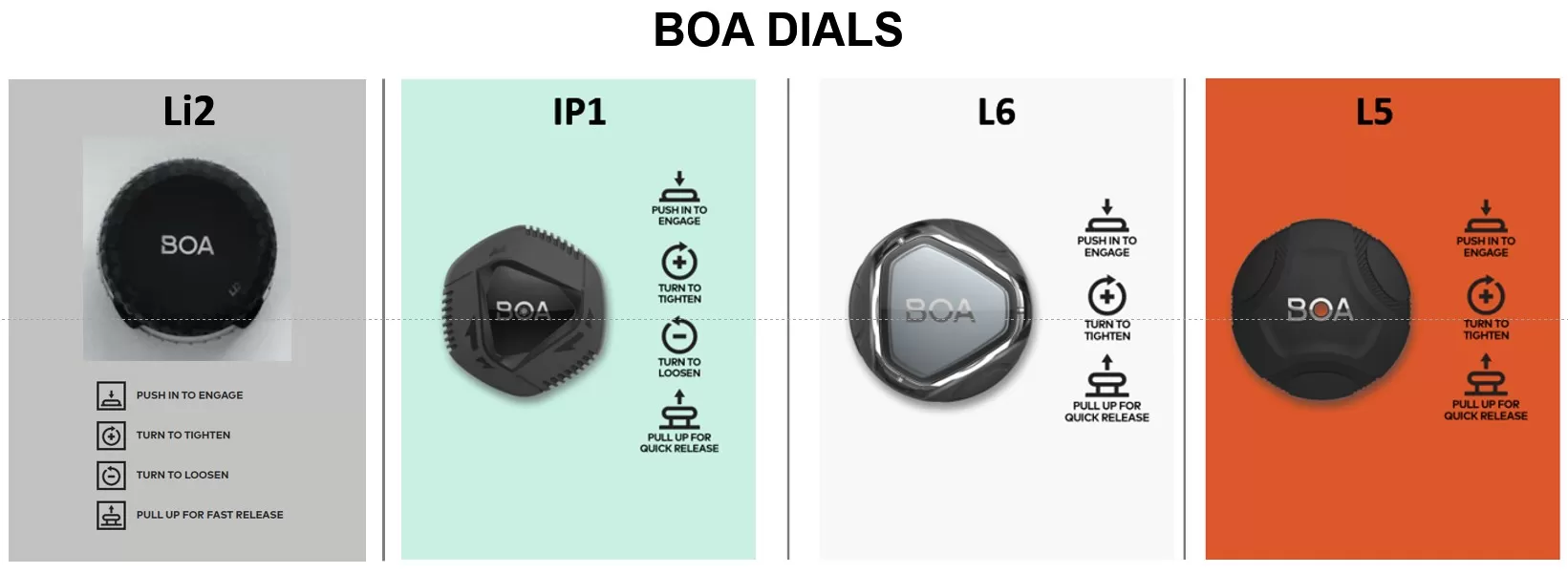
Boa’s Li2 and IP1 dials have become the standard on performance cycling shoes, and other Boa dial models are also starting to be seen on value shoes. As you can see in the chart above, both have the same functionality, most notably pushing down to engage and pulling up to release the closure process. The Li2s have slightly shorter steps between clicks for finer adjustments as you turn clockwise to tighten and counterclockwise to loosen.
Specialized uses S3 dials on their latest top-of-the-line cycling shoes. As I’ve not seen these on any other brand of shoes, I assume Boa makes them only for Specialized. They emphasize a more textured feel of the dials, turning clockwise and counterclockwise to tighten and loosen like the others but without the need to push in to engage or the ability to pull up to quickly release.
Why have most middle and top-end road shoes moved to Boa dial closures?
Quite simply, they can give you a better and more comfortable fit and are easier to adjust while underway than the laces, straps, buckles, etc., they have replaced. The tension can be spread more evenly across various parts of your foot as you close the shoe for a secure fit.
If they are used in combination with a high-quality upper with minimal seams and a good heel cup, insole (aka footbed), and outsole in a size, width, and last (or foot-shaped molds built to unique heel width, instep height, forefoot width, and toe box depth and width) that fit your feet, they can give you that glove-like feel with efficient power transfer that I’ve never been able to get with Velcro straps and buckles.
The best-performing road cycling shoes have two dials, one close to your ankle and the other between your midfoot and forefoot, typically to the outside of the tongue. In most cases, they give you more control of the closure tension and fit than those with a single dial found on mid-priced cycling shoes. That results in better power transfer and comfort.
For that reason, I’ve evaluated two dial shoes in this review. With the exception of Sidi, which uses its own proprietary dial, lace, and hook closure system, all the shoes reviewed here use Boa closures.
Are men’s and women’s shoes different?
Many companies do sell gender-specific shoes. That said, it’s hard to tell whether some of the the women’s cycling shoes are really designed for a woman’s foot – stereotypically narrower and smaller than a man’s – or are of the same design as a men’s shoes but available in “woman’s” sizes and in colors shoemakers think will appeal to women.
The good news is that there are plenty of men’s shoes (or probably shoes originally made for male riders) that also fit women available in basic black, white, and other gender-neutral colors that are made in half sizes, though mostly with standard men’s widths, and with different lasts to serve a good range of rider needs, both men and women.
If you wear running shoes or football (aka soccer) cleats or any other sports footwear, boots, or well-fitting shoes, you probably have a good idea if your feet are narrow or wide, have high arches, where you are sensitive to hot spots, etc. This will help you figure out what shoes to try or what special requirements you might need to get the right fit.
How different are the sizes between brands?
Like other types of shoes, cycling shoes of the same size from different brands will vary in length, width, and fit. Most road bike shoes are labeled in EU sizes. Brands provide size guides to help you close in on the sizes they use on their shoes compared to the sizes of other shoes you wear.
Alongside the EU size, these size guides will usually provide the men’s and women’s US and UK sizes closest to the EU size. Some will also give you a corresponding length in centimeters and instructions on measuring your feet.
These are helpful but not always dependable. And they are focused only on the length of the shoe. Equally important measures like the heel cup and forefoot widths, arch height, and toe-box room are unique to the brand or a model’s last.
To deal with all of these differences, I’ve developed a chart comparing the last characteristics of the shoes we’ve worn and reviewed. For a given size, you can see whether a shoe has relatively more or less of each key dimension versus the average fit of the shoes we’ve tested.
In the review of each road cycling shoe, I say more about how each fits.
What are the pros and cons of buying shoes online vs. at a local bike shop?
As I learned when reviewing aero helmets (here), buying online is a more efficient way and will likely result in you getting a better cycling shoe choice and price.
If you’ve been in a bike shop lately, you know that most carry fewer brands and less inventory of models, sizes, and colors than online stores. So to go the bike shop route, you need to be willing to spend the time traveling around to various shops to find the models and sizes you are interested in during the hours when you should be working or could be riding or relaxing at home.
If you buy at an online store, you merely order the ones you are interested in with a few clicks whenever you want to. That’s an easy choice for me.
Buying online, you also get to wear the different shoes or sizes of the same shoes you are interested in for hours at a time in the comfort of your own home the way you couldn’t or wouldn’t do in a bike shop. You also don’t have a salesman in the middle of the process who might be urging you to buy something they sell, but that might not be best for you compared to something they don’t carry.
If you aren’t sure what you need or what constitutes a good fit and you have a knowledgeable cycling shoe fitter at your store, you may benefit from buying there.
The harder choice is figuring out whether you are willing to add to your credit card balance by ordering extra models or sizes from an online store until you return the ones you don’t want versus just buying one pair after spending the time going to a lot of bike shops and trying on the shoes they have in stock.
You can also apply both approaches. In my case, for example, there was one very high-end shop not too far from me that had a good selection of three brands (Lake, Fizik, Sidi) and a chain that sold a couple of models made by the larger cycling companies (Specialized, Trek, and Shimano).
Unfortunately, the shoe fitter in the high-end shop was clearly pushing shoes I didn’t need and was selling them at full price. The chain store had a model I liked in a color I didn’t and another in a size that was just a bit big. I would have needed to special order these, and the store wanted me to make a deposit and commit to buying the shoes before they would order them. Uh, no, thank you.
Competitive Cyclist in the US is one of the online stores I’ve bought a lot of gear from over the years and has a top 5 ranking of the nearly 100 stores I track (see here). They had most of the shoes and sizes and color combos in stock I was interested in. By buying from them, you can order, receive, try on, and return shoes that don’t fit and get your purchase credited, all within a single credit card billing cycle. I’ve done it with other gear and kit with no questions asked.)
If you want to know how to replicate the cleat position of your old shoes to your new ones or position them without a reference point,here’ss a good video fromArt’ss and another from GCN that tells you how. It’s pretty straightforward.
And if you plan to get a pair of shoes that can be heat molded for a customized fit, know that the process is designed for you to do in your home oven. It takes a few rounds of 10-20 minutes of heating, cooling, and forming to get it right. Few shops are set up or are going to be able to spend the time to do that with you.
Find what you're looking for at In The Know Cycling's Know's Shop
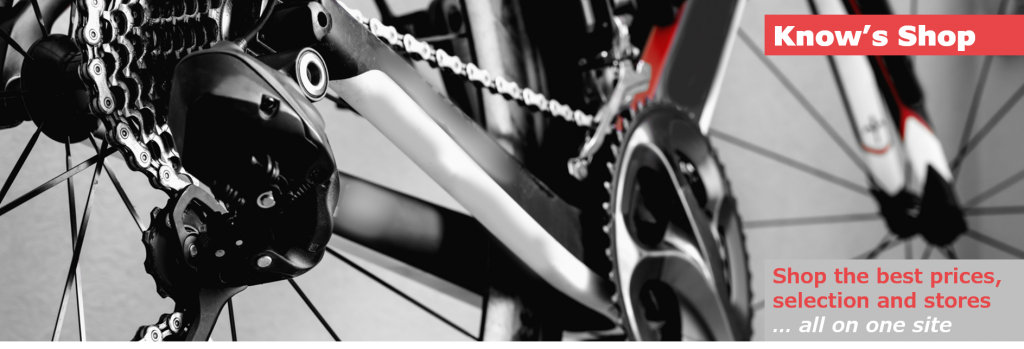
- Compare prices on in-stock cycling gear at 15 of my top-ranked stores
- Choose from over 75,000 bikes, wheels, components, clothing, electronics, and other kit
- Save money and time while supporting the site when you buy at a store after clicking on a link
SELECTION CRITERIA
My discipline for each In The Know Cycling review is to evaluate gear-specific criteria that fit into four groups – Performance, Design, Quality, and Cost. I put an emphasis on Performance and Cost criteria in making my recommendations. Design should mostly be focused on delivering performance rather than merely sayingyou’vee got some technology, spec, or features no one else does.
Normally, if a novel or unique design doesn’t make the gear perform better or reduce cost, it is a wasted effort. With the look of shoes being important to some, design approaches can provide a distinctive or gotta-have look in the designer’s or buyer’s eyes. I can only point out but can’t judge a distinctive look with my admittedly blind-to-fashion sensitivities. You are the best judge of what looks best to you.
I describe the criteria within each of the four groups here.
PERFORMANCE
As I stated at the top of this post, efficient power transfer, comfortable fit, good-looking, and reasonably priced are what make a good cycling shoe and how you should choose them. The first two of those are clearly performance criteria.
Efficient power transfer depends on two things: 1) how stiff the outsole is and 2) how closely your shoe moves with your foot. With a stiff sole and a fit that holds your foot firmly to that shoe so that it moves with no wasted effort, you’ll transfer your power efficiently.
Without a good fit or one that doesn’t hold everything but your toes in place, power will be lost somewhere between your foot and the pedal.
Good-fitting road cycling shoes will keep your heel down on your upstroke, your toes free, your midfoot and forefoot snug, and your arch well supported. This comes in part from picking one with the right size or, more specifically, the right “last” (heel width, instep or midfoot height, forefoot width, and toe box width and depth).
Fit also comes from how well the upper and closure system works to wrap you at all points across the top of your forefoot, how well your arch is supported by a combination of the last and insole (aka footbed), and how well the heel cup shape aligns to your own heel.
Comfortably fitting power transfer really speaks to your ability to stay comfortable with that right fit over time, distance, and different environmental conditions, not just when you try it on.
To keep a good fit comfortable, you need a shoe that will 1) be breathable enough to allow your feet to cool (keeping them warm is usually done through socks or overshoes, 2) not produce any hot spots or pressure points across the top of your midfoot or along the touchpoints between the bottom of your foot and insole, and 3) allow you to adjust the fit for different situations like changing temperature, normally swelling feet, hill climbing and sprinting.
It’s important to remember that a good fit doesn’t guarantee comfort. You can also be comfortable in shoes that don’t fit you very well. You need both fit and comfort well secured to a stiff outsole to get good power transfer over miles and miles of riding.
Since everyone’s feet are a little different, I can only describe the last characteristics of cycling shoes (for example: runs narrow, wide toe box, high arch, low volume forefoot, etc.) to help steer you to those that might best fit what you know to be the characteristics of your own feet.
Once you get the right fit, the shoe’s efficiency and comfort performance are more easily discernible.
Too many companies market their shoes’ power transfer based on the stiffness of the outsole. The outsole might be super rigid, but if your foot moves around on top of that outsole, you aren’t going to get an efficient transfer of power.
DESIGN
The design of a road cycling enthusiast’s shoe, as with any cycling gear, is mostly focused on delivering the desired performance level for a targeted cost and partly on delivering a certain look. Some designs work well in achieving performance goals, while others fall short. Some design characteristics, like sole composition, can be objectively measured against a performance goal while others, like a shoe’s attractiveness to a segment of customers, can only be judged in the eyes of potential buyers.
Just because a shoe has a specific technology or design feature doesn’t mean it will perform better than those that don’t. Design is a means to performance, cost, and aesthetic ends. Sometimes a technology or feature helps get you there, while sometimes, it makes no difference or actually detracts from the performance and cost goals.
Unfortunately, since performance is hard to quantify and describe, companies market the crap out of technology, specs, and features. You see a lot of that from companies selling cycling shoes similar to the way you do from those selling wheelsets, bikes, and cycling clothing.
So while I will lay out the major design criteria here, you should only be aware of them and choose how well they deliver the performance, cost, and look you want from your shoes rather than whether your shoes have one design feature or another.
Outsole – Performance-level road bike shoes are almost always made from very stiff carbon fiber-impregnated resins. Lower-priced or value cycling shoes use less stiff carbon fibers and often nylon fibers in their soles. Outsoles may also be designed with ribs or other structural features to improve their stiffness, provide desired arch support levels, or toward other performance objectives.
The bumpers on the front and back of the shoes, many of which are replaceable, are designed to protect your soles from damage or scuffing and, to a lesser degree, to make it easier to avoid falling on your face when you walk around off the bike or at a coffee shop.
Last – The dimensions of heel width, instep height, forefoot width, and toe box depth give a shoe its unique fit characteristics. The proportions of these dimensions will typically remain consistent regardless of the length or size except when separate men’s and women’s shoes are made with different lasts.
Insole (or Footbed) – Many shoes, regardless of price, come with very basic, wafer-thin insoles that most people will replace with those that can be best fit to the rider’s specific arch and forefoot needs. Specialist companies make these insoles and represent an upsell for the shop. So you have to figure that into the shoe cost. Some shoes do come with more substantial insoles that work as is or can be customized with wedges of different thicknesses that you insert or velcro to the footbed.
Closures – As mentioned in the Q&A section above, Boa closures systems have taken over the performance road cycling shoe market with only a few exceptions (e.g. Sidi and Northwave shoes). Different models of Boa closures used on cycling shoes provide more or less functionality, mostly in loosening the shoes, but they all tighten more or less the same way.
As I described earlier, most of the top-performance shoes now use two Li2 or IP1 model Boa dials. One is typically placed at the top of the shoe, closing it just below your ankle. The second goes lower down your shoe to close it across your midfoot.
Some designs extend the wire from the lower dial to the guides further down to your forefoot at the base of your toes. Older shoes use a Velcro strap to help you synch up that area over your toes. Some don’t have any mechanism to tighten that area of your shoe.
With the latest generation of Li2 and IP1 Boa dials (don’t ask me what the letters and numbers stand for), you relieve all the tension in the wires by merely pulling up on each dial. This gives you a quick exit from your shoes at the end of a ride or allows you to open them fully to put your foot in when you put them on.
String laces have made a comeback in retro or football-style cycling shoes. You’ll see them both on high-performance and value shoes. Laces provide almost infinite adjustment to get the fit right when you first put your shoes on, but unless you stop, you obviously can’t adjust them during a ride the way you can with dial closures.
Ratchets, buckles, and Velcro straps are the traditional closure systems used mostly on value shoes these days. You will sometimes find straps combined with dial and wire closures on performance shoes like those in this review.
Uppers – Uppers differ based on the type of material being used, how many separate pieces are stitched together, and how flexible, soft, and breathable they are. Some shoes use real leather, most use synthetic leather-like material, and others use a synthetic mesh.
One-piece uppers reduce the potential pressure points or hot spots across the top of your feet that come with stitching or seams pressing down on them. The more stitching and seams, the more likely you are to get pressure points and potentially an uneven fit from materials that stretch differently.
Some shoes will use a synthetic leather upper with a more breathable mesh near the toes to provide more ventilation, where feet tend to sweat more. Uppers will also be perforated with holes to improve breathability. Softer and more flexible uppers can improve flexibility and improve the shoe’s fit but may also provide more give when you are pedaling and lead to less efficient power transfer.
Venting – To keep your feet from overheating, uppers usually have perforations throughout and are sometimes combined with a mesh area in spots where the feet can get especially overheated. Some shoes are best for summer temperatures, while others with less ventilation can be worn three seasons without an overshoe but might be a little warm on the hottest days. Most good shoes have vents in the outsole for cooling, which will be covered over with an overshoe when riding in cooler weather.
Customization – If you are hard to fit or have problems with hot spots, there are many potential causes, as shown in this chart from an article by Jo Allen.
Although you see it less often in the newer models, some of the more expensive shoes have heat-moldable insoles, heel cups, and even uppers to customize the fit of your shoes. Moldable insoles make sense if you have feet that pronate unusually. Moldable uppers or integrated upper and outsoles like on Bont shoes can help improve your fit if you have bunions or have found over the years that you just have difficulty finding shoes that will fit your feet.
According to the companies that make these heat-moldable shoes, most people don’t need or even use the molding. Heat-moldable shoes are often more expensive and take several hours of molding and remolding over the first few months of use to get them right. If you feel or are being told you need a moldable shoe, you may want to consider whether you are going with what seems like a cure-all feature you don’t need or your shop is trying too hard to sell you a shoe that’s not right for you.
Weight – Cycling shoe weight is another place where we, as riders and the industry as marketers, put way too much emphasis on something that matters so relatively little. With the exception of a couple of outliers, most of the performance shoes weigh within 50 grams per shoe of each other.
As shown in one of the last characteristic charts in this post further below, the size 43 or so shoes I evaluated in this review weigh from 218 (for a size 42.5) to 304 (for a size 43.5) grams per shoe. Beyond those two, however, the remaining shoes range from 240 to 260 grams, essentially no discernable weight difference.
The bottom line: weight is something most of us enthusiasts should give little, if any, attention to when buying performance shoes.
Sizes –You’ll find half sizes available for most shoes in the more common foot size range. Most also have women’s sizes or at least smaller shoes of similar lasts. Some shoes are sold in standard widths, and others are sold in wide sizes.
More importantly, the lasts differ from shoe to shoe and tell you much more about how well a shoe will fit than simply ordering a standard or wide width. The Last Characteristics chart below shows you the difference in shoe lasts from, dare I say, heel to toe.
Outsole bolt holes – Nearly all road shoes come with 3 bolt holes in the outsole to work with road cleats made by Shimano and Look, the most popular pedal systems. Speedplay, another popular road pedal system now made by Wahoo, uses cleats with 4 holes. While you can find a couple of shoes that come with outsoles specifically designed for 4-hole Speedplay cleats, a simple adapter Speedplay makes can convert any 3-hole shoe to work with their pedals.
If the shoe you are interested in only has 2 holes, you better be planning to use them with mountain bike cleats as theywon’tt work with your road bike ones.
Walking – Chris Froome took to running in his cycling shoes on a 2016 Tour de France stage up Mont Ventoux when a moto ran over his bike, and no other bikes (or running shoes) were immediately available. While the best road cycling shoes are not designed for running, and few are great to walk in for long, some I’ve noted in my reviews may be less desirable than others when you are walking around while in a café or on a bathroom break.
Style – We can all judge this for ourselves. I suggest getting a shoe that will provide a comfortable fit first and efficient power transfer if you want a performance-level shoe. Once you’ve done that, pick between the shoes whose look or style you are good with.
Most road bike shoes come in black, white, and yellow or red with standard lines. There are others that have tried to separate themselves with a unique style or comfort touches, including some with a retro lace-up closure system, others with real kangaroo leather, and still others with bright neon green, orange, and blue color choices. And then there are combinations of these colors.
Something for everyone, I guess.
QUALITY
Fortunately, all the shoes I’ve reviewed are made of pretty high quality. The most you should have to do on some that have this feature is to replace the heel pads on the bottom of the shoes when they wear down to improve your walking rather than your riding. You’ll also want to keep your Boa system clean by using some water on the dials and silicone on the wire guides to avoid things from getting gummed up.
Of course, you may treat your shoes in ways that extend or shorten their life. My suggestion is that if you are going to put a few hundies down on a nice pair of shoes, take care of them. I’ve tried to point out if I know of a shoe’s reputation for wearing out in one place or another, but I haven’t seen that much in the relatively short period of time I can test these shoes.
COST
With shoes, our cost is primarily what we pay for them when we first buy them.
Depending on the shoes you buy or the needs of your feet, you may need to buy custom insoles when you first get your shoes. Many of us transfer the insoles we already have from shoe to shoe or buy a new pair every year or two when they flatten out or lose their shape.
Other than heel pads, there are no other added or maintenance costs you need to figure in along the way.
Like much of the cycling gear these days, the price of shoes often depends on whether the company sells them just through local bike shops or also sells them online. Most sell through both channels these days, and prices often depend on typical retail strategies – inventory, margins, promotions, etc.
* * * * *
Thank you for reading. Please let me know what you think of anything I’ve written, or ask any questions you might have in the comment section below.
If you’ve benefited from reading this review and want to keep new ones coming, buy your gear and kit after clicking the store links in this review and others across the site. When you do, we may earn an affiliate commission that will help me cover the expenses to create and publish more ad-free, subscription-free, and reader-supported reviews that are independent, comprehensive, and comparative.
If you prefer to buy at other stores, you can still support the site by contributing here or by buying anything through these links to eBay and Amazon.
You can use the popup form or the one at the bottom of the sidebar to get notified when new posts come out. To see what gear and kit we’re testing or have just reviewed, follow us by clicking on the icons below.
Thanks, and enjoy your rides safely! Cheers, Steve
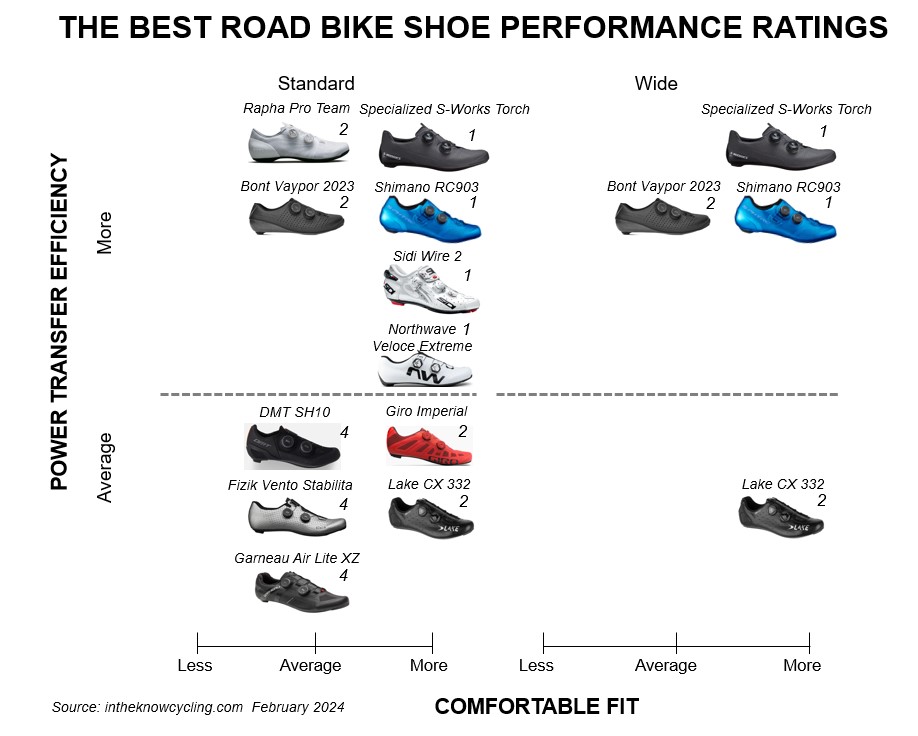
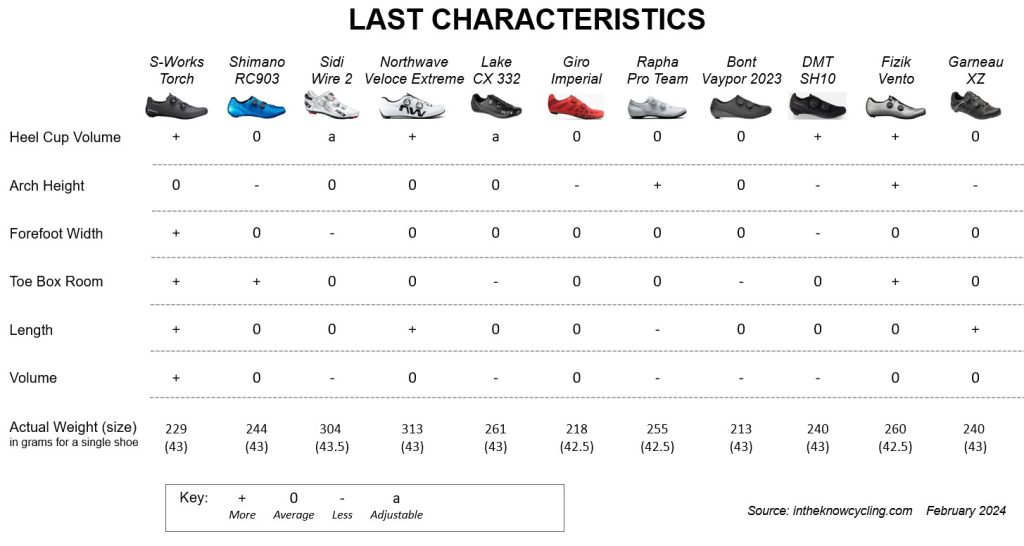
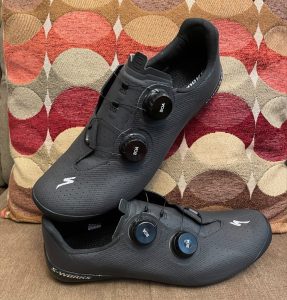
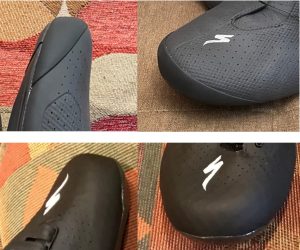
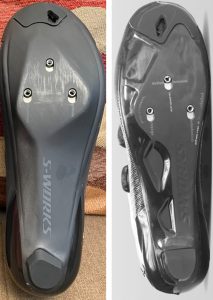
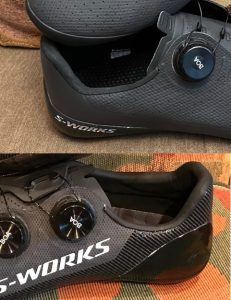
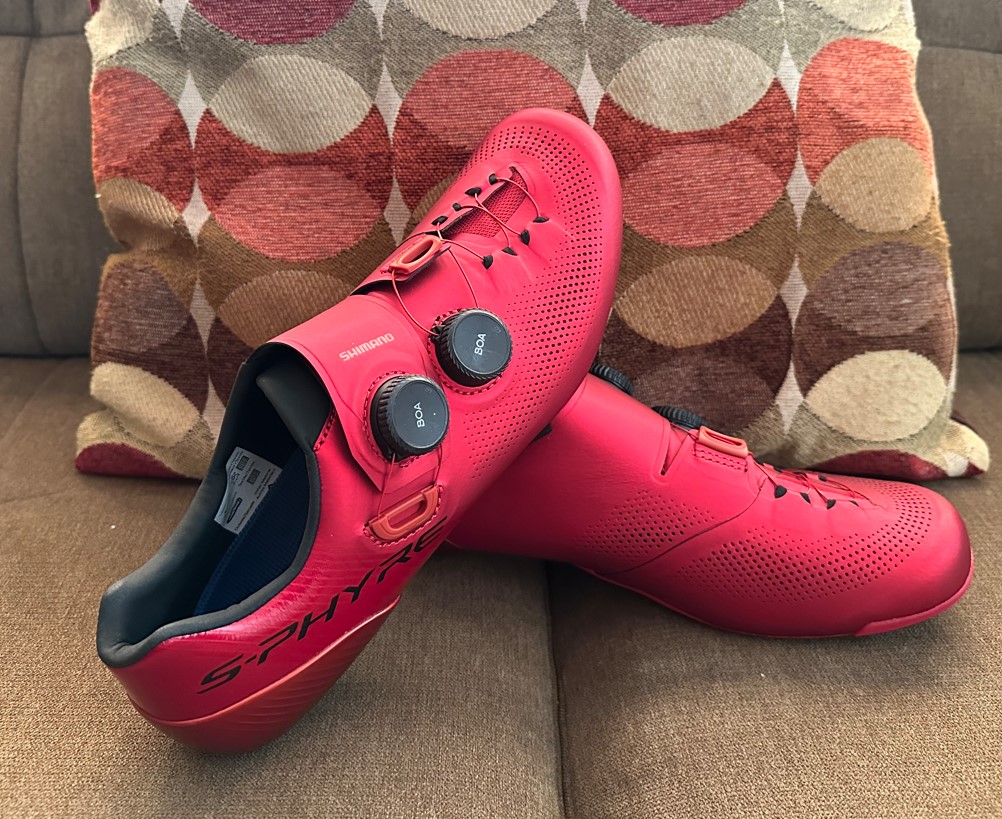
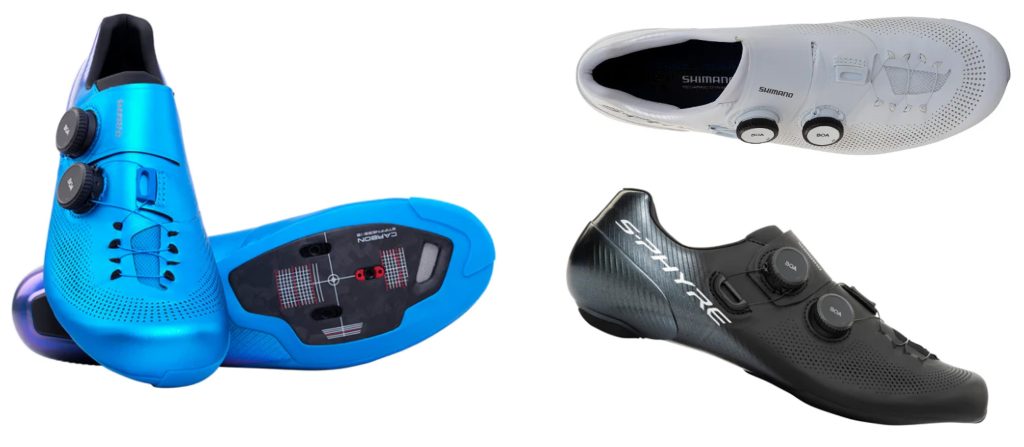
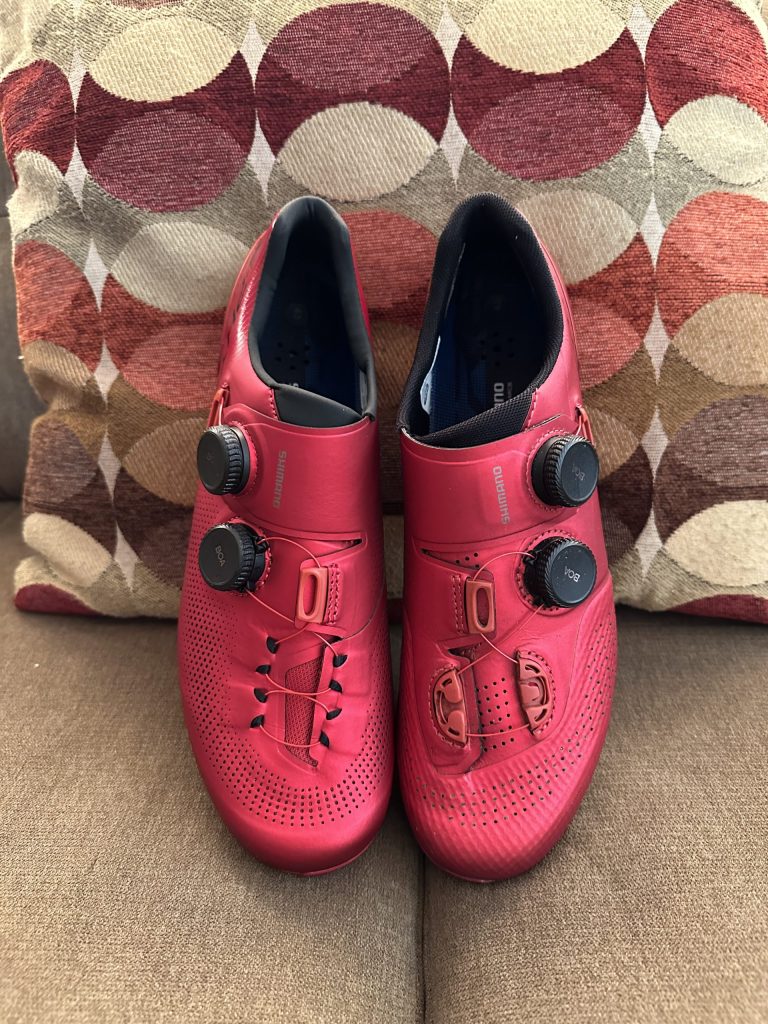
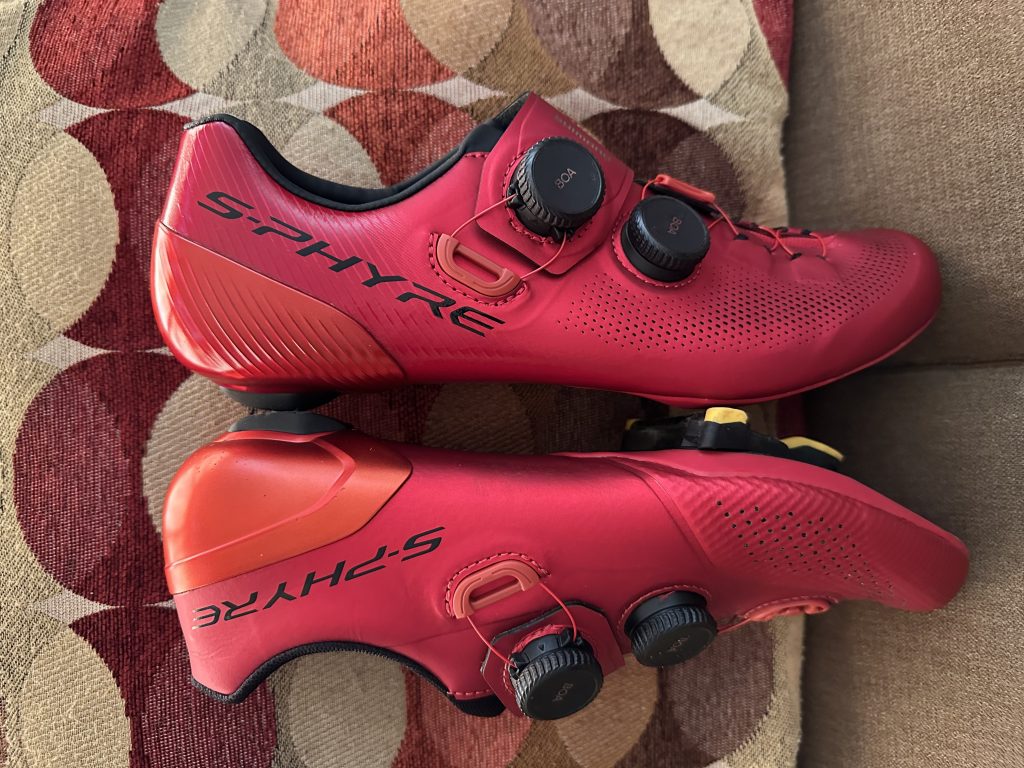

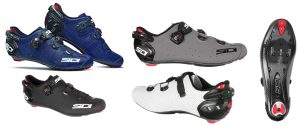
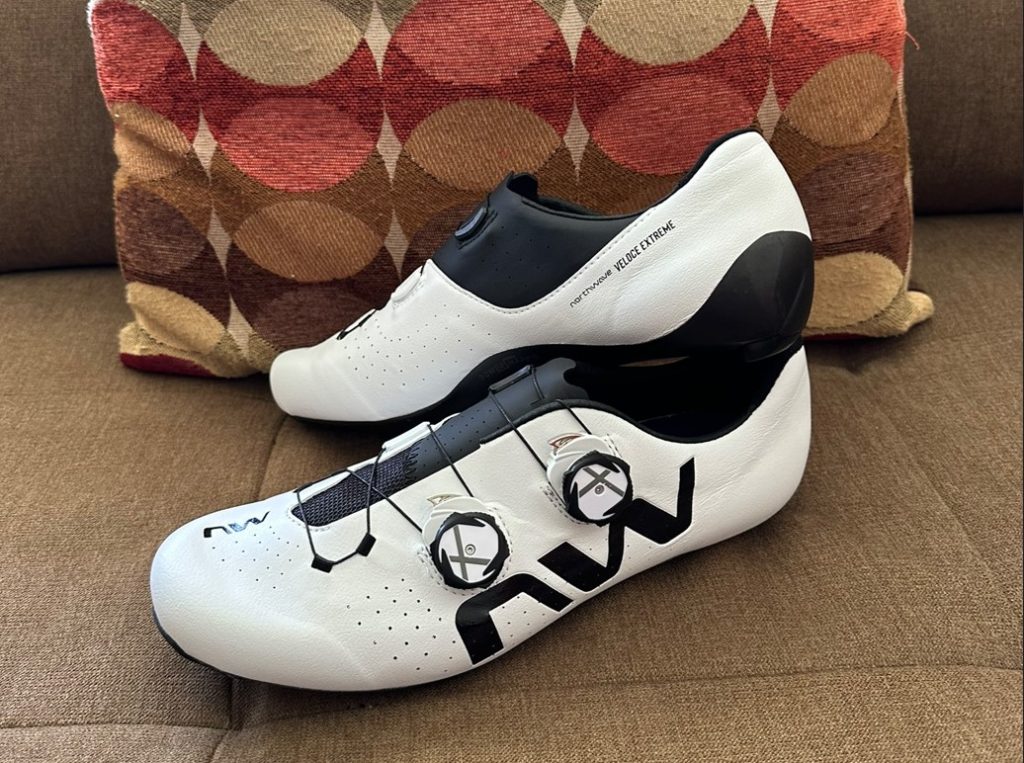
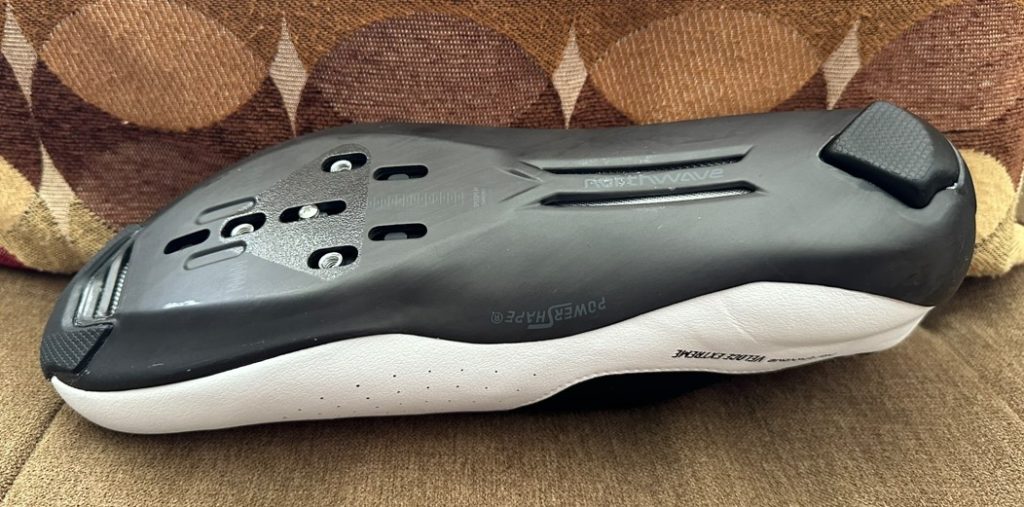
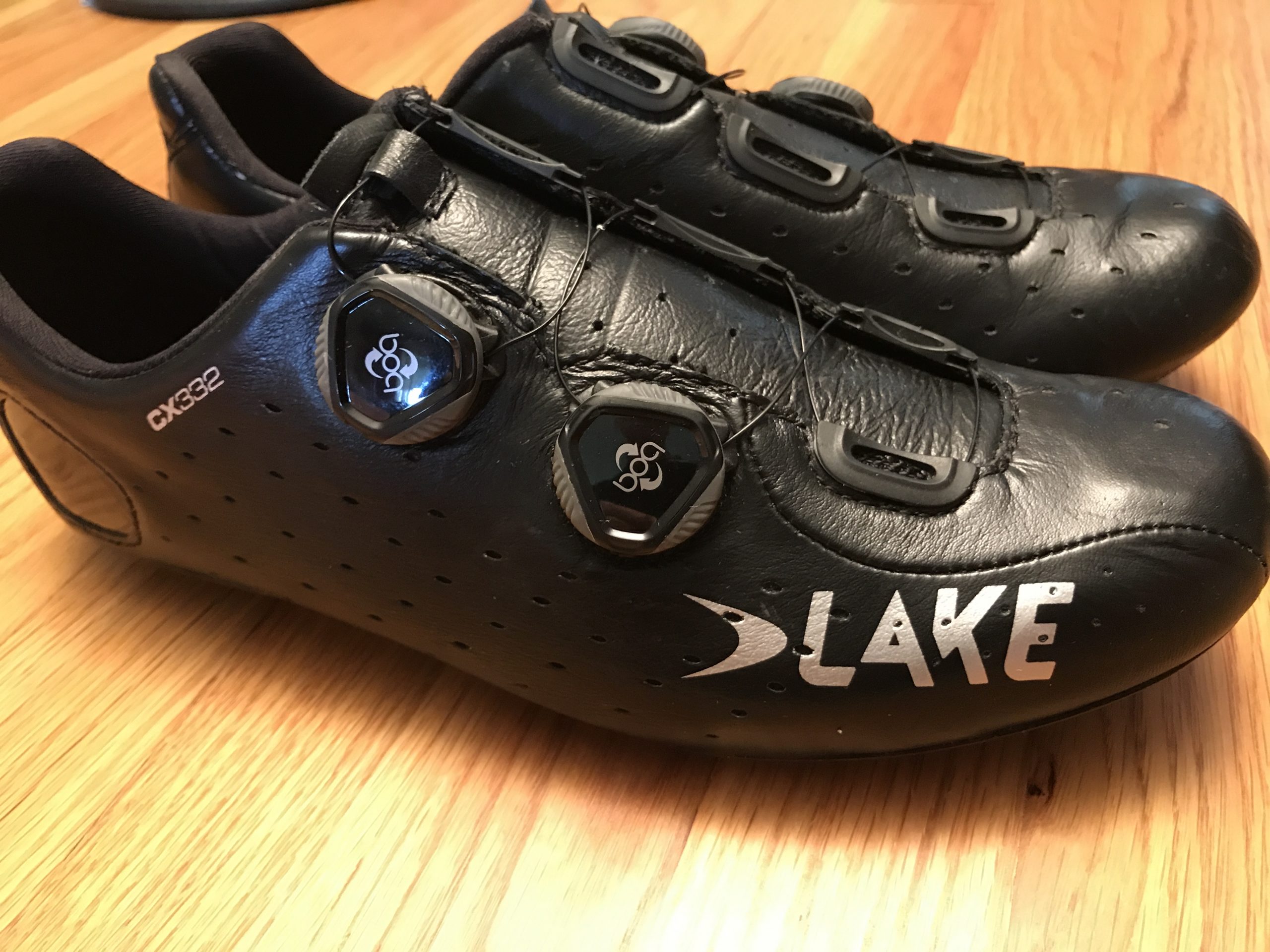
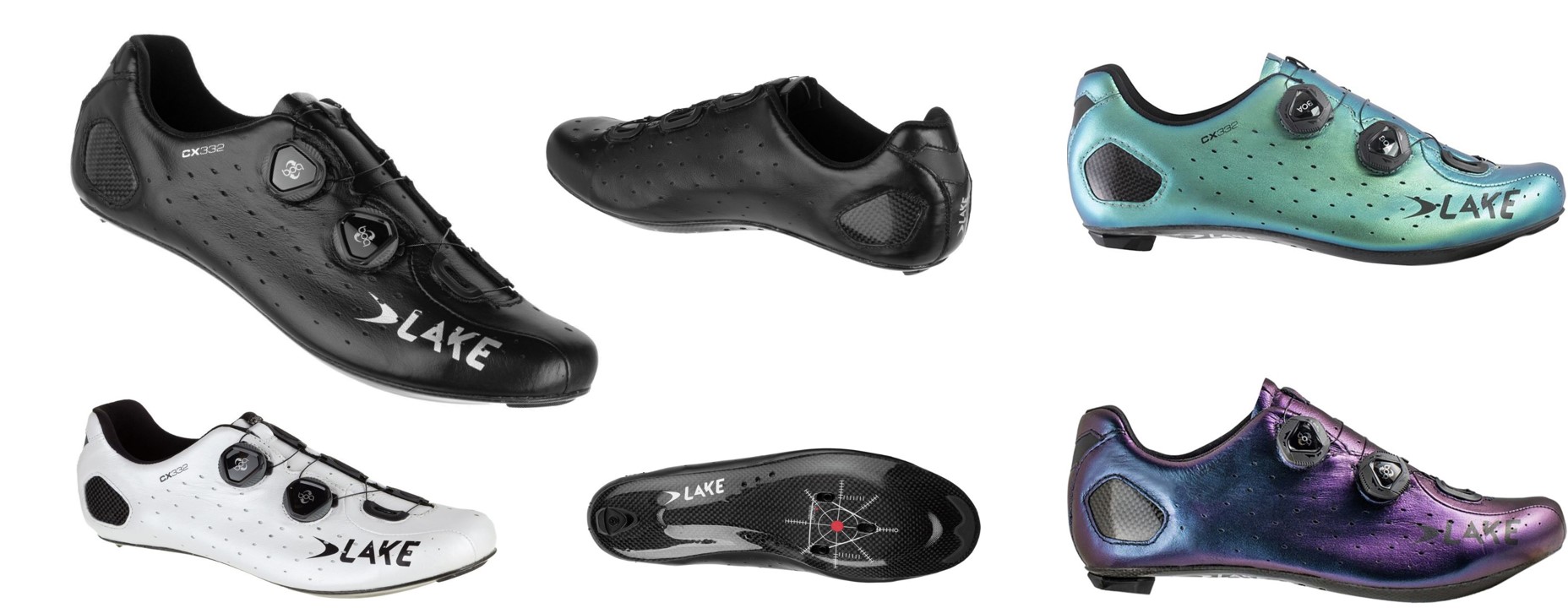
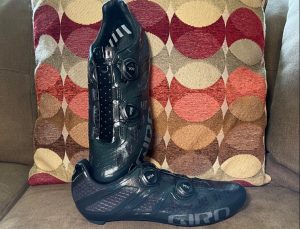

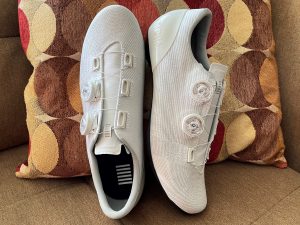
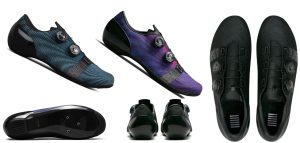
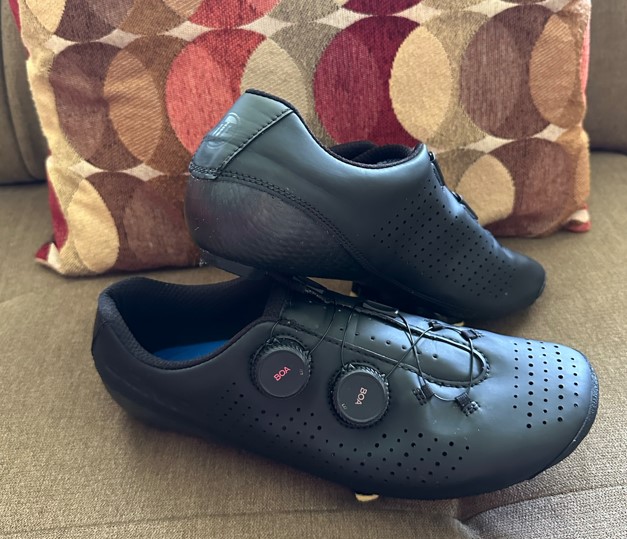
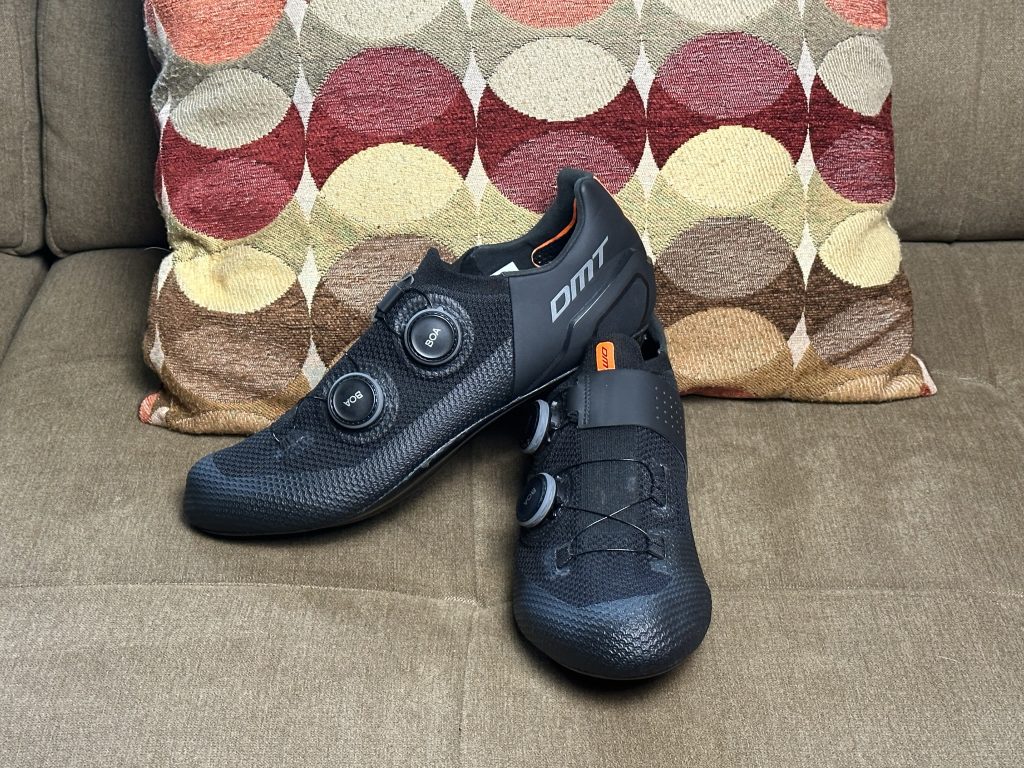
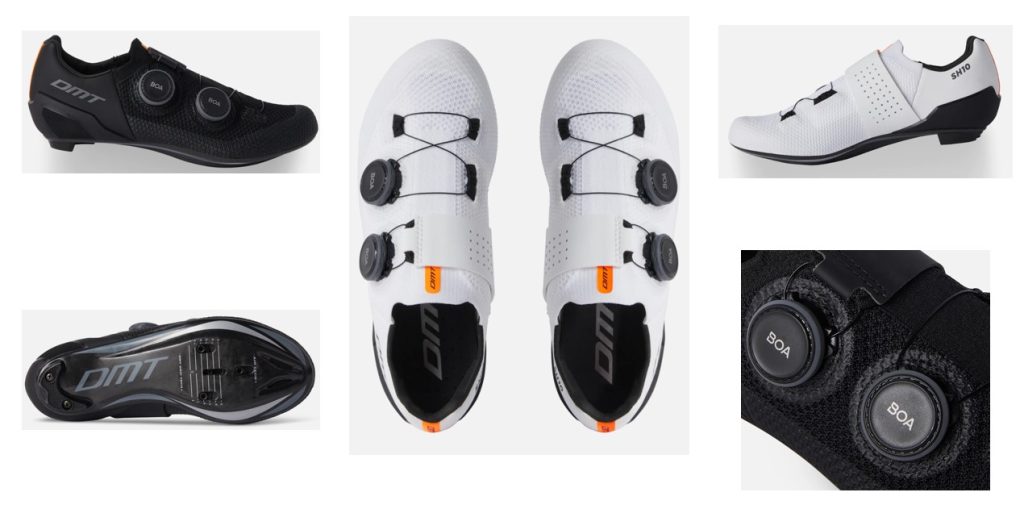
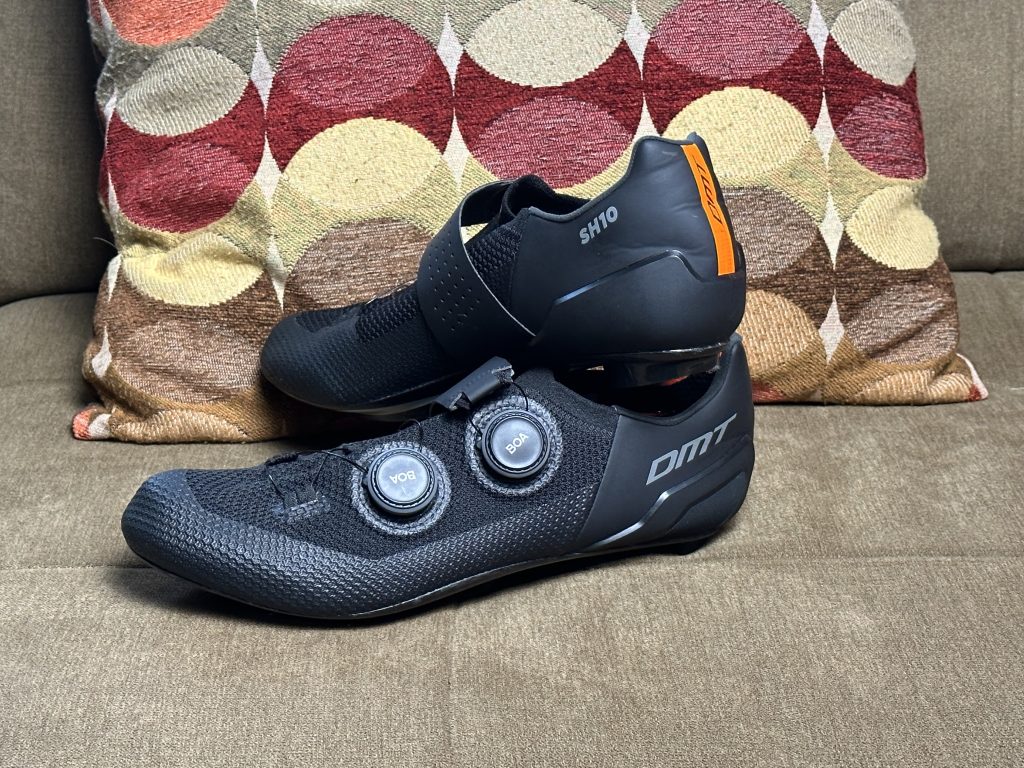
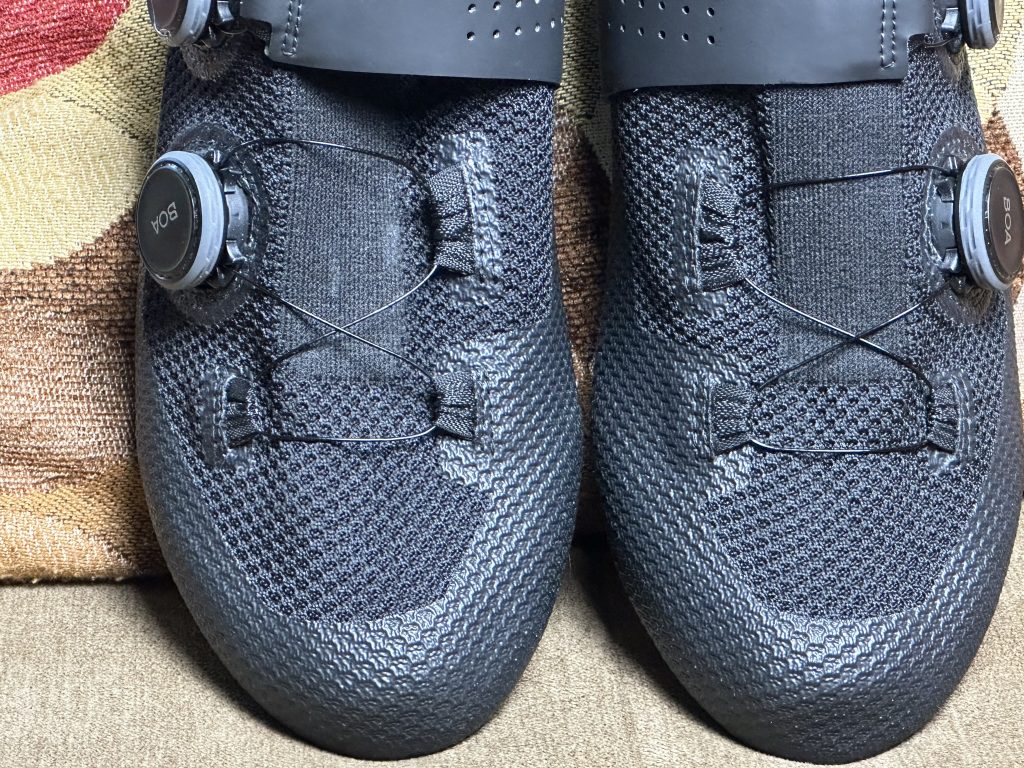
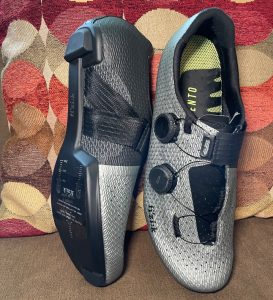
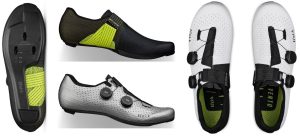
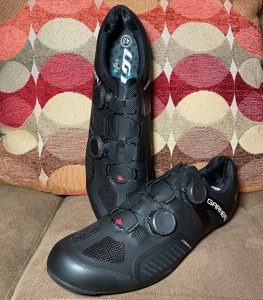
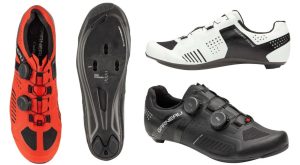
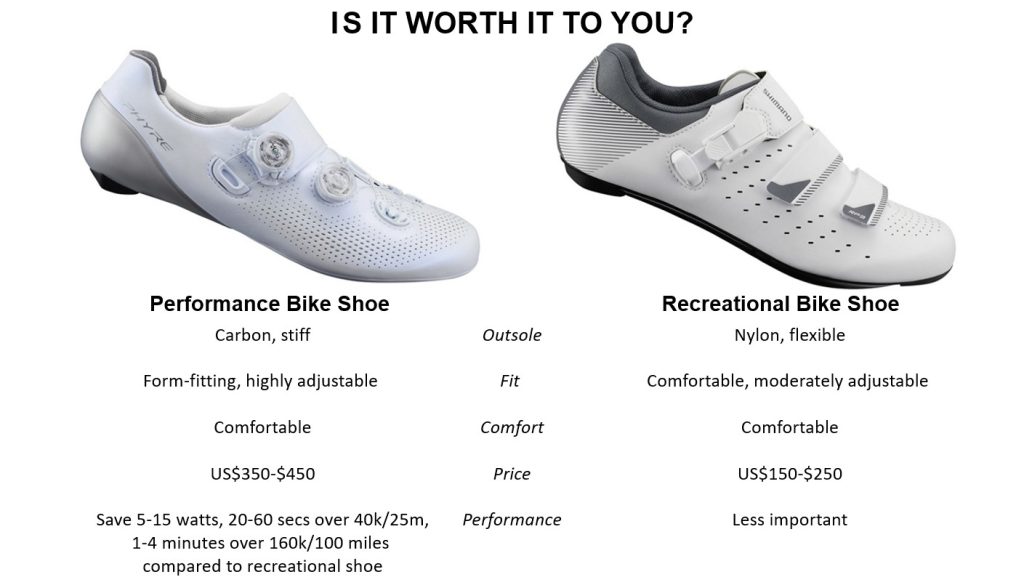
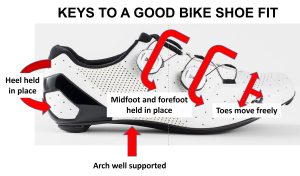
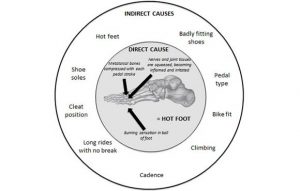
Bont has less toe box room than Sidi??? I think you need to check that again
Drew, Historically, I would agree with you. But the last on the new model that I tested and rated, the Vaypor 2023 has a different last and has far less toe box room compared than the Vaypor S and other Bonts I’ve tested and than the Sidi Wire 2 model shoes. Steve